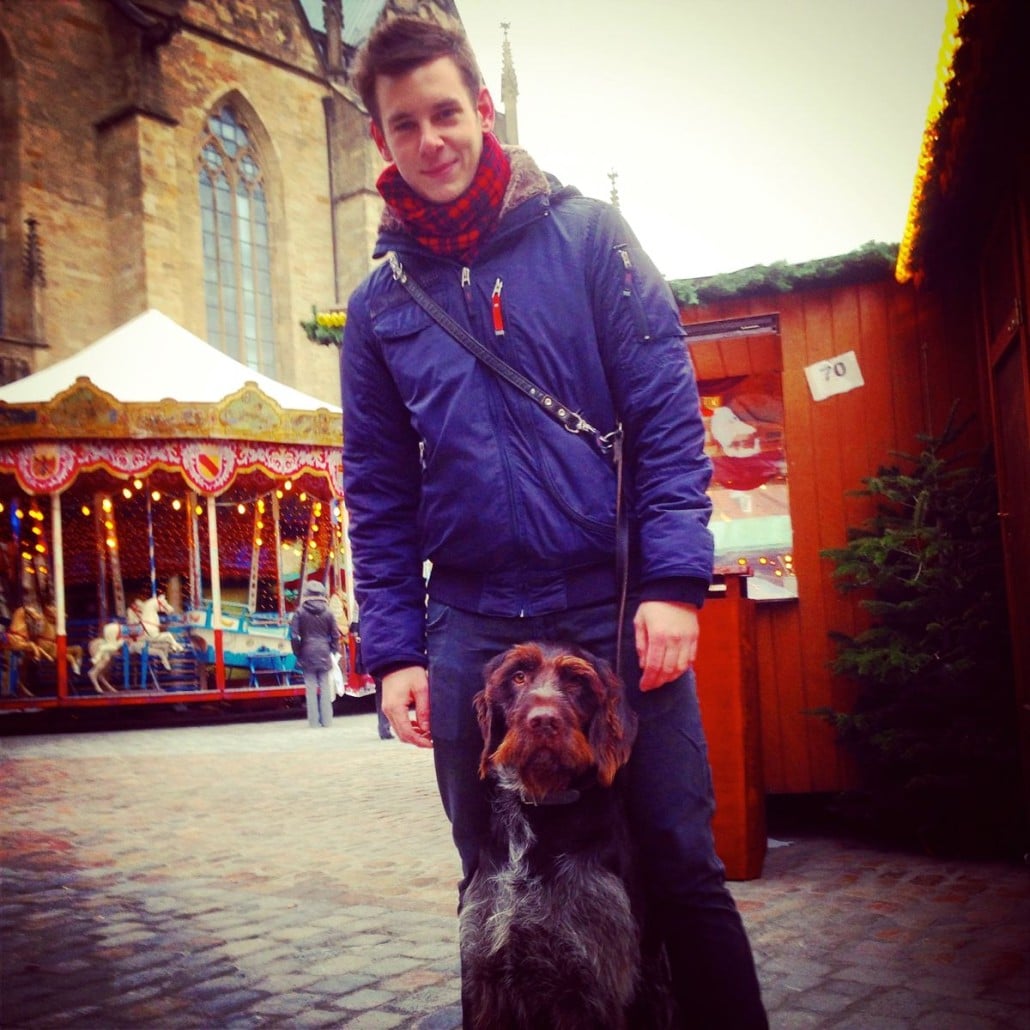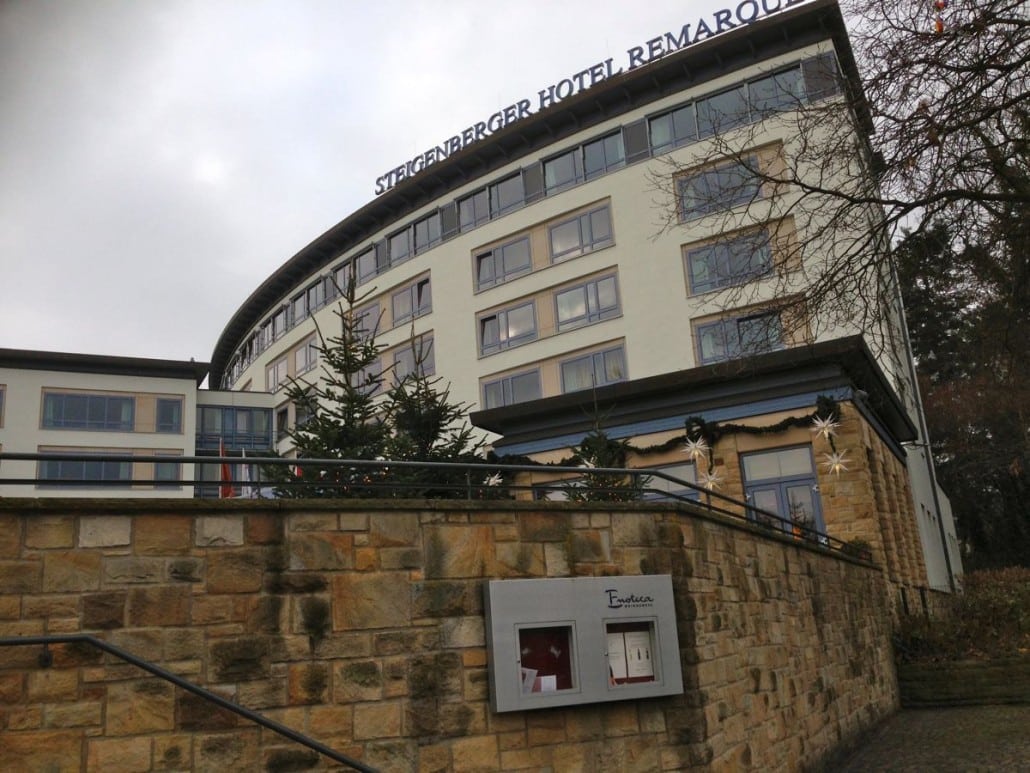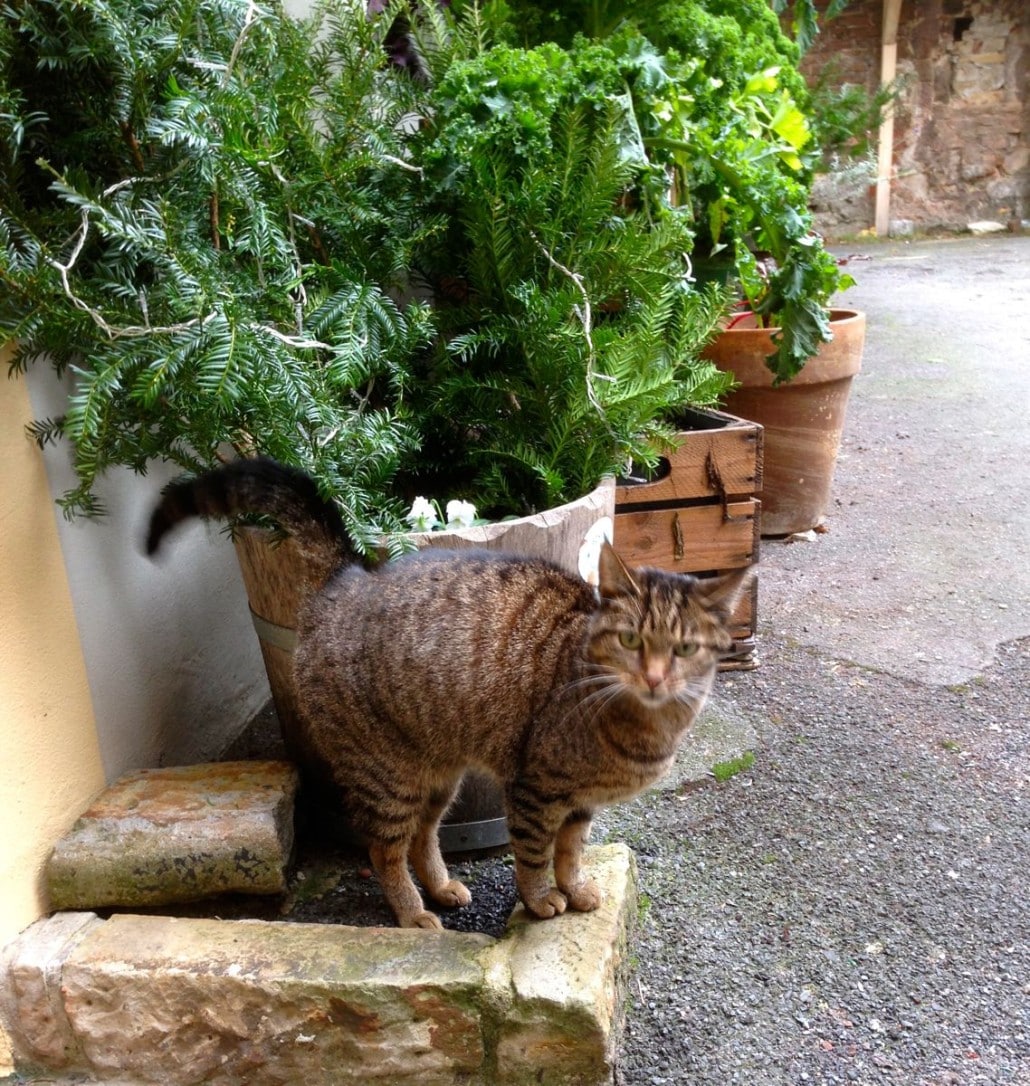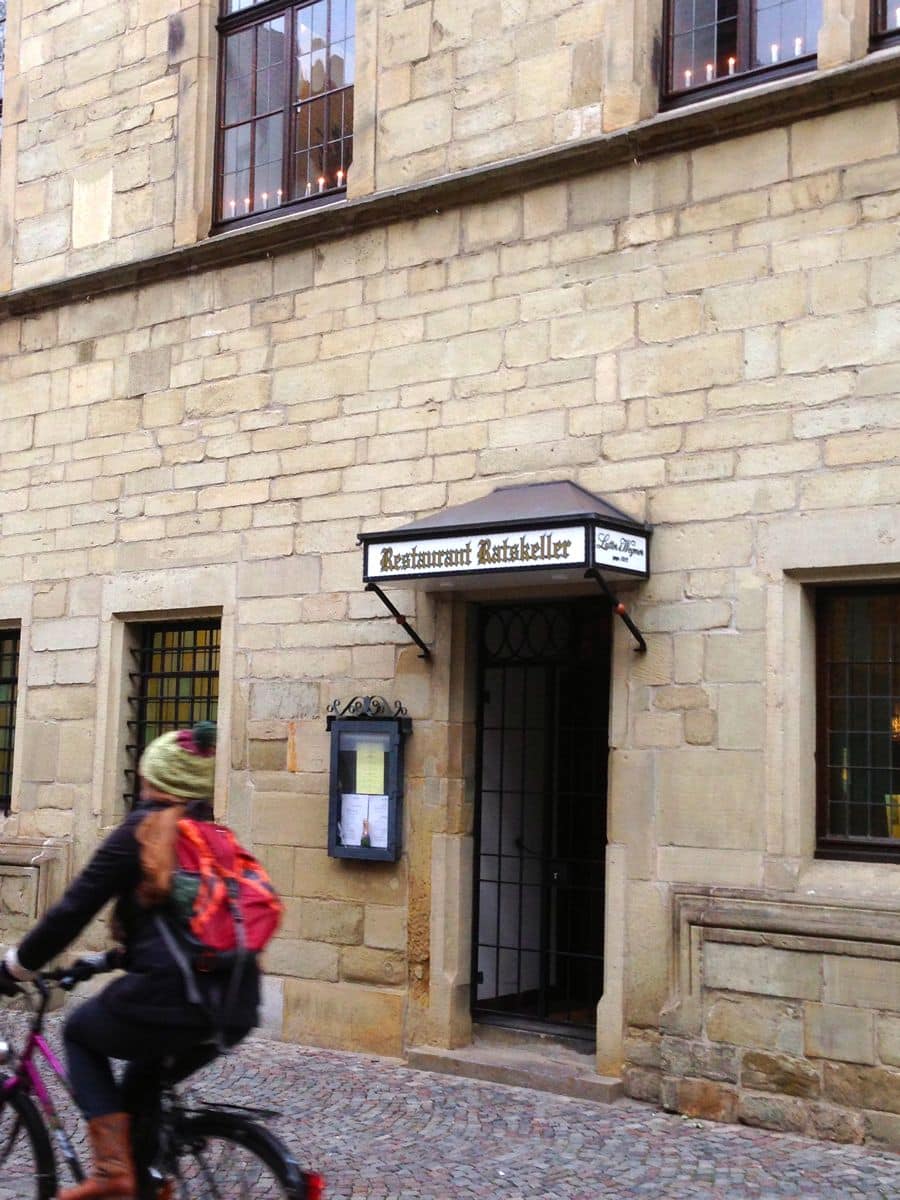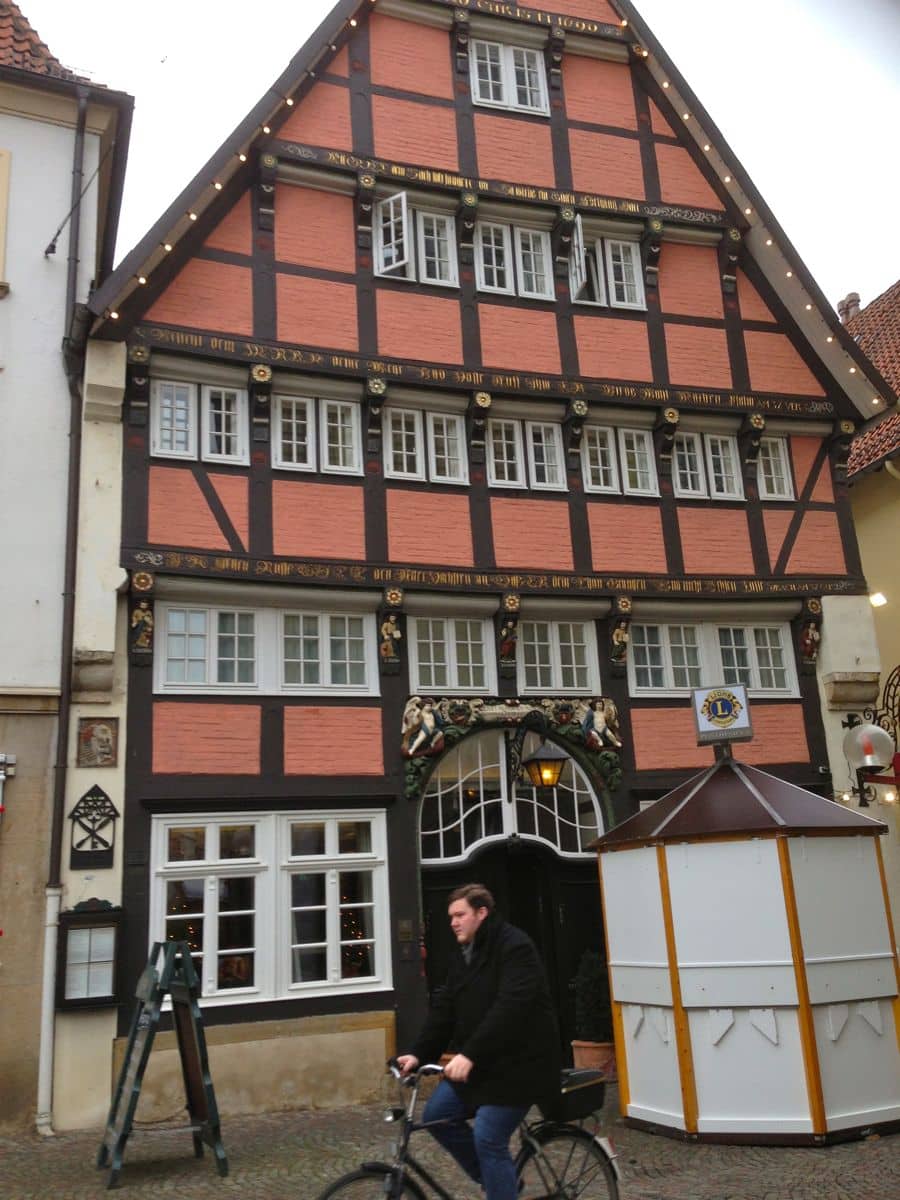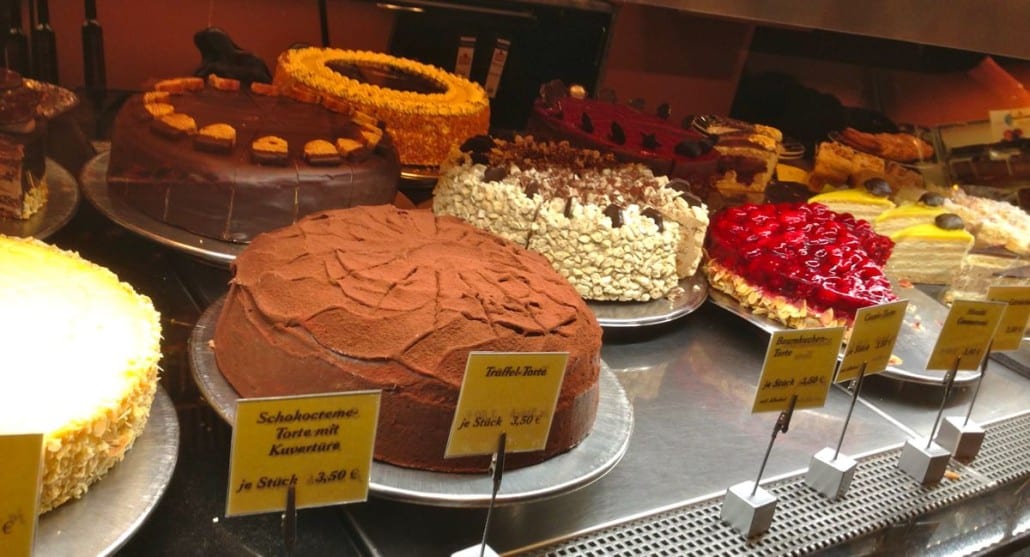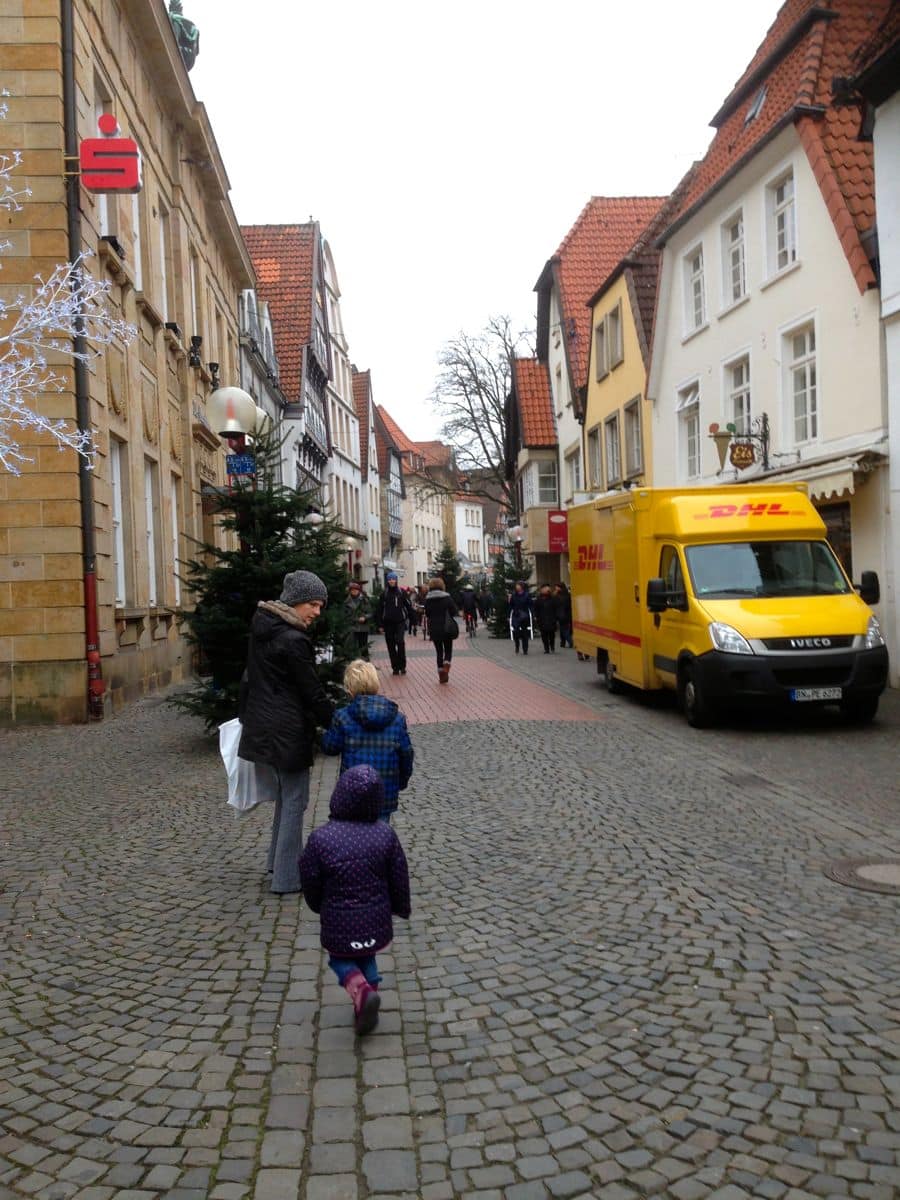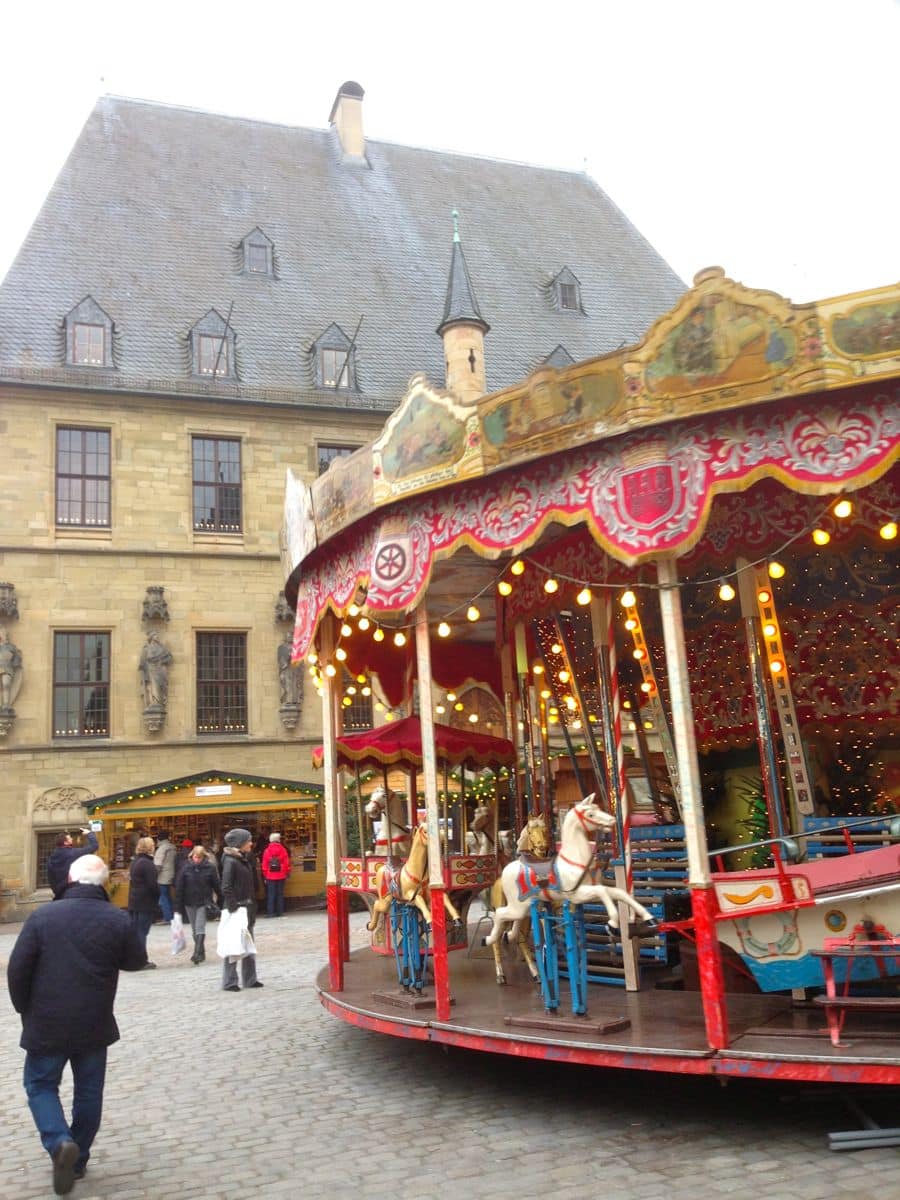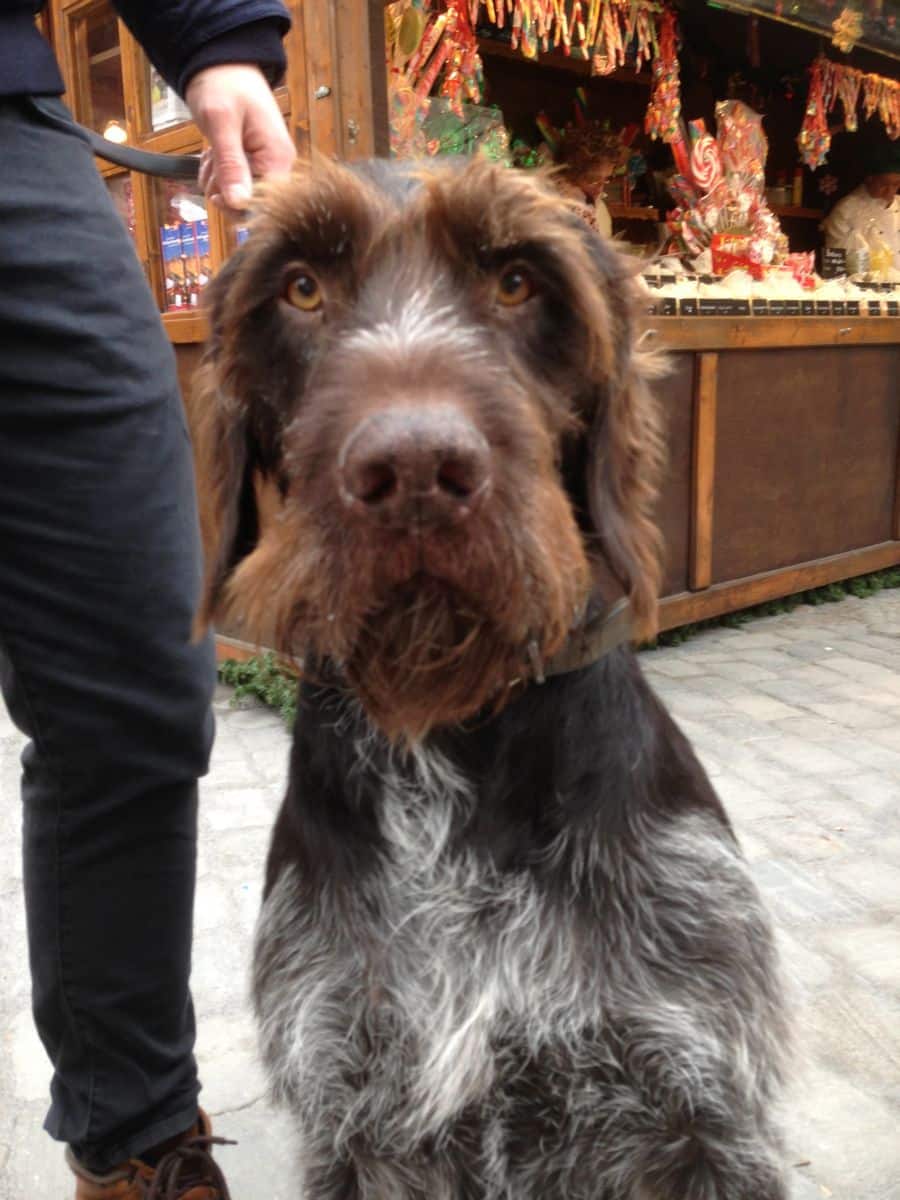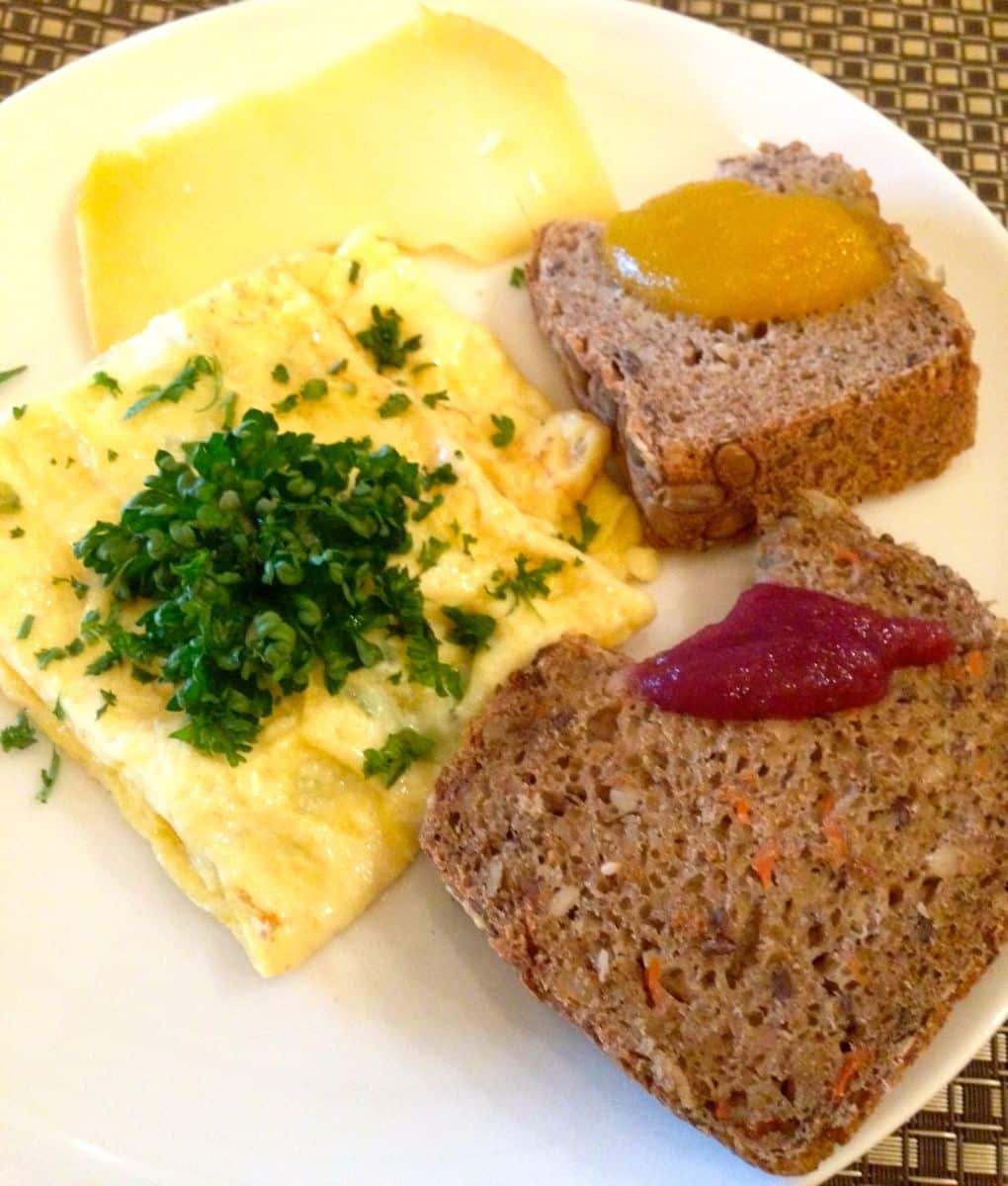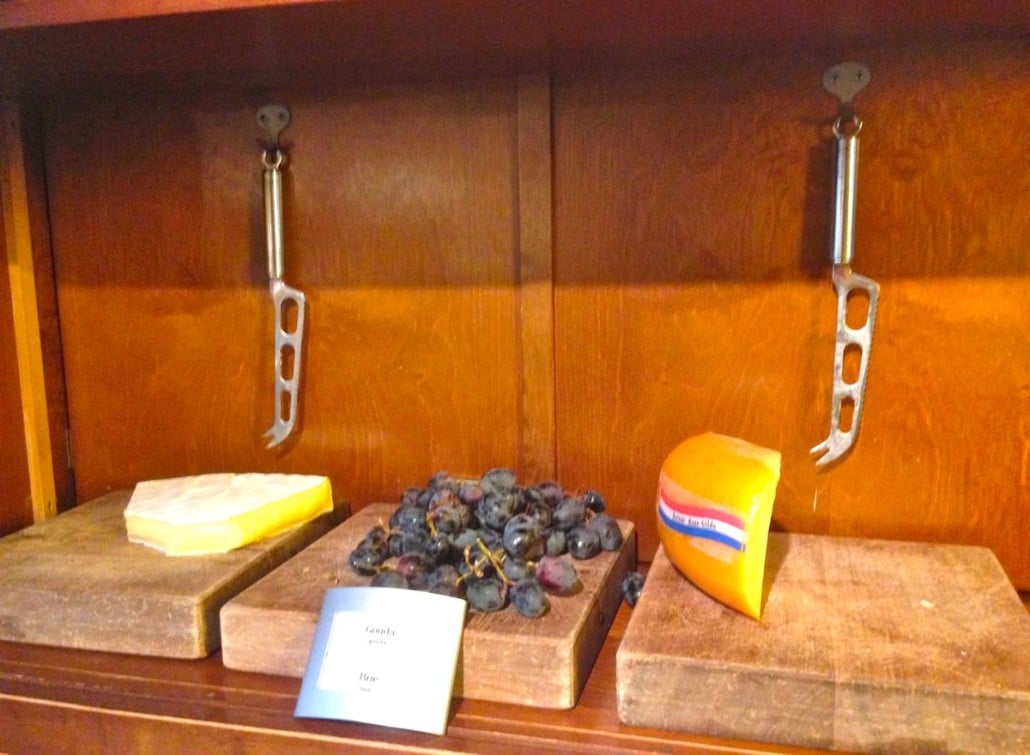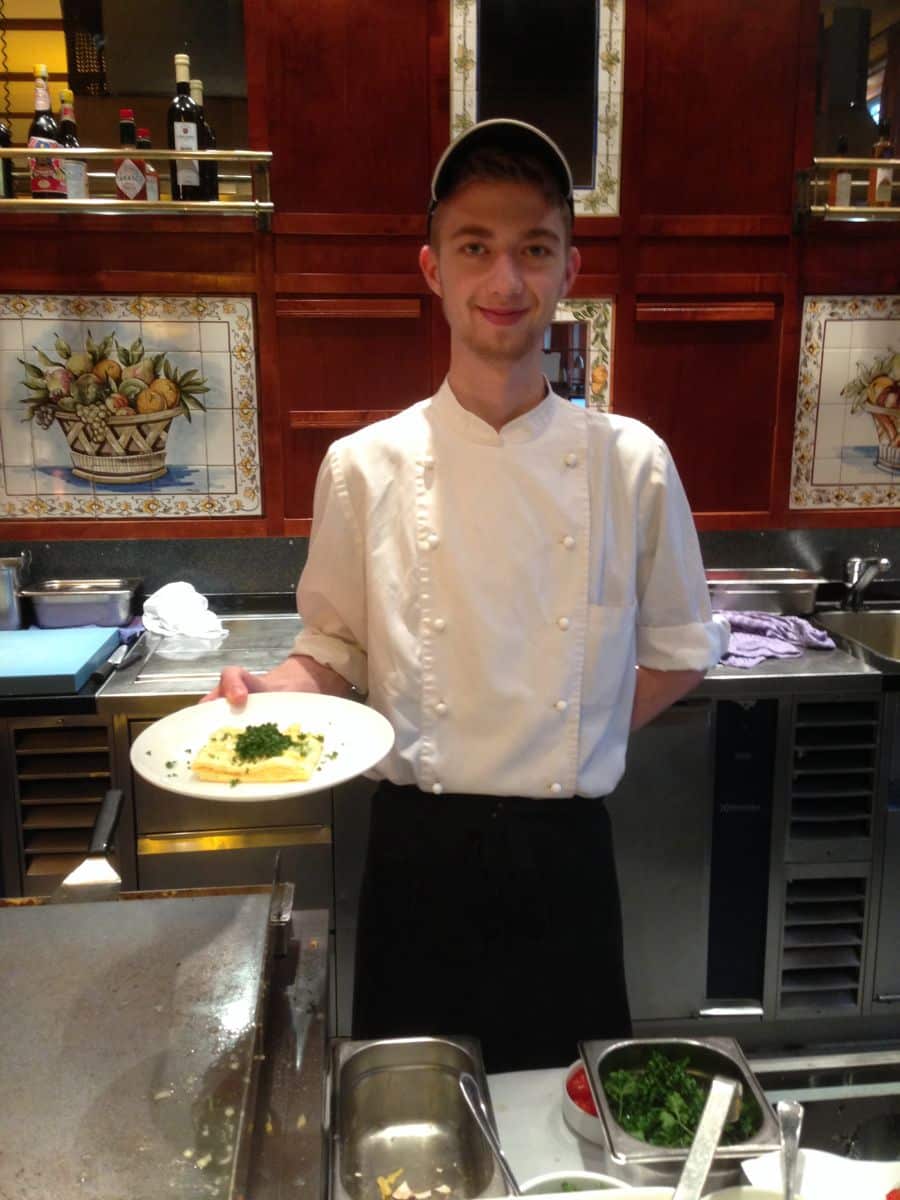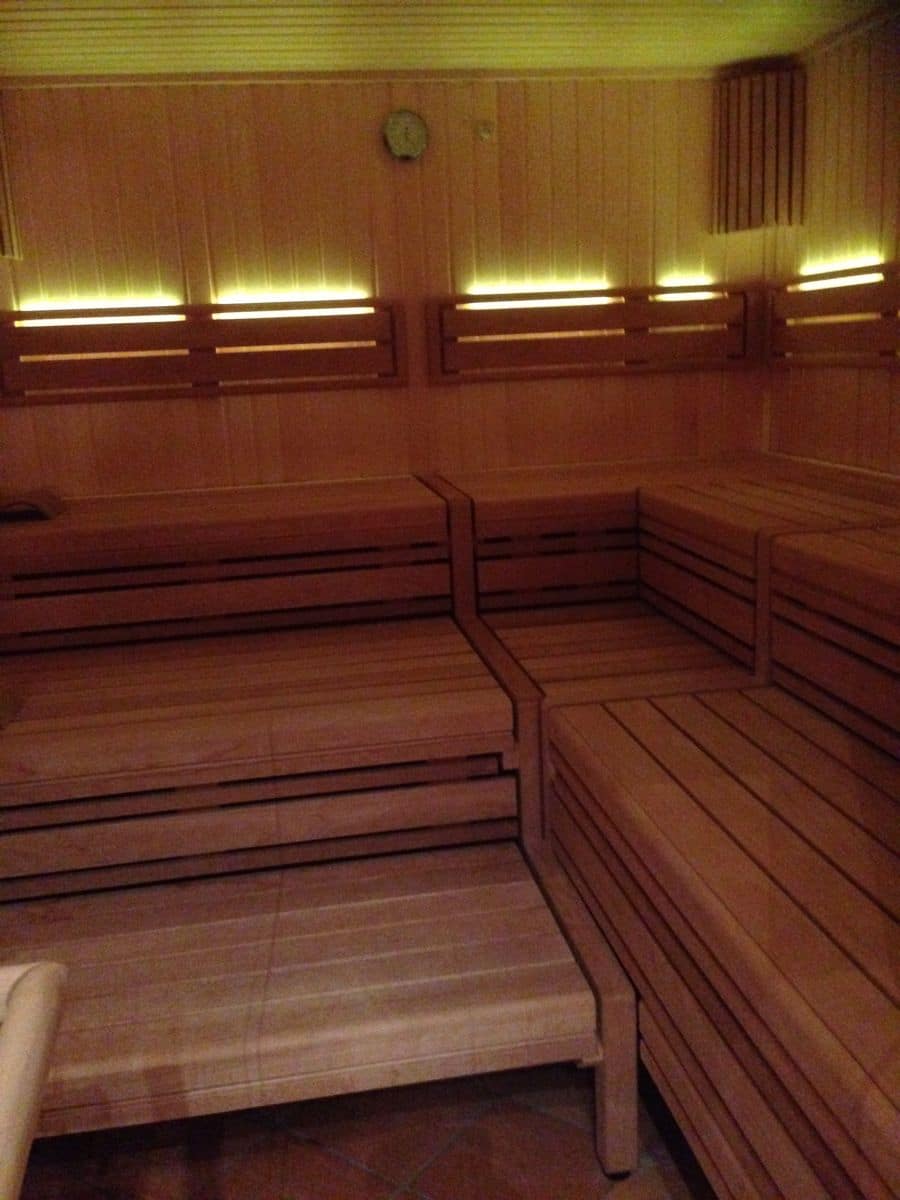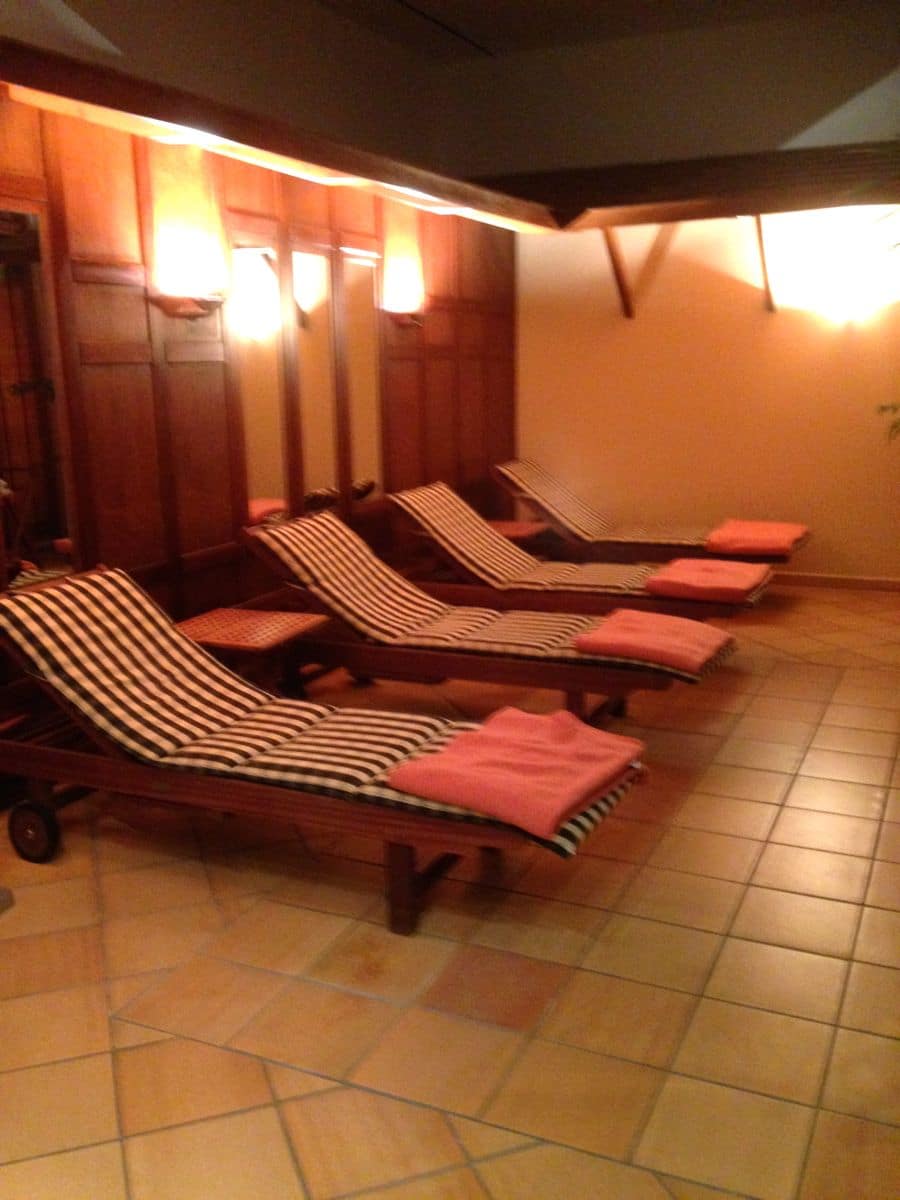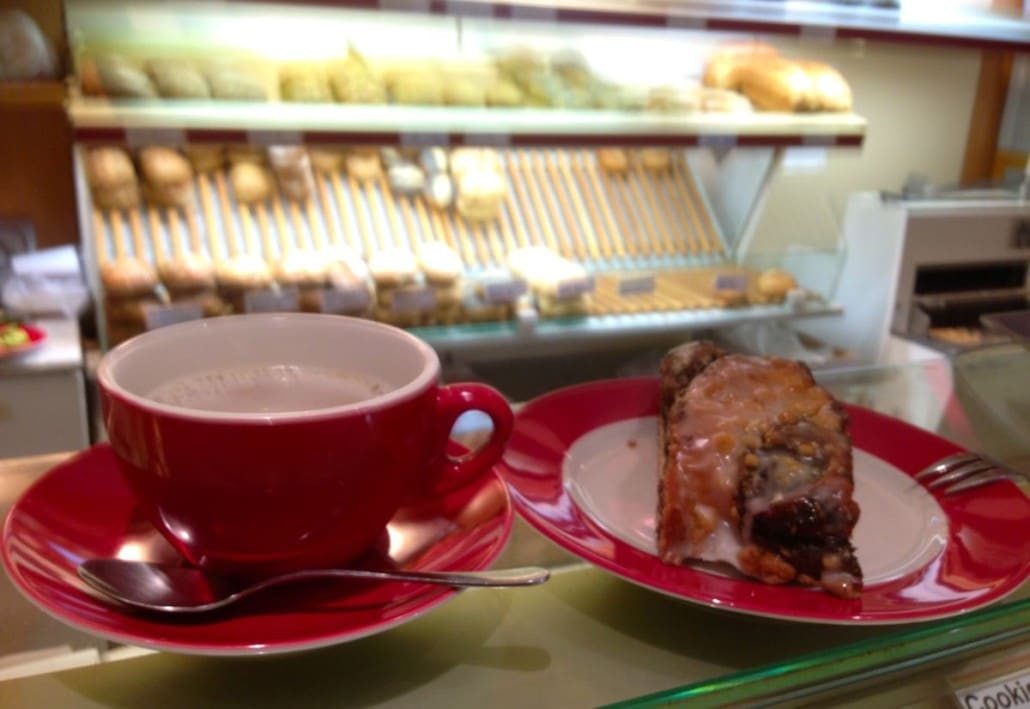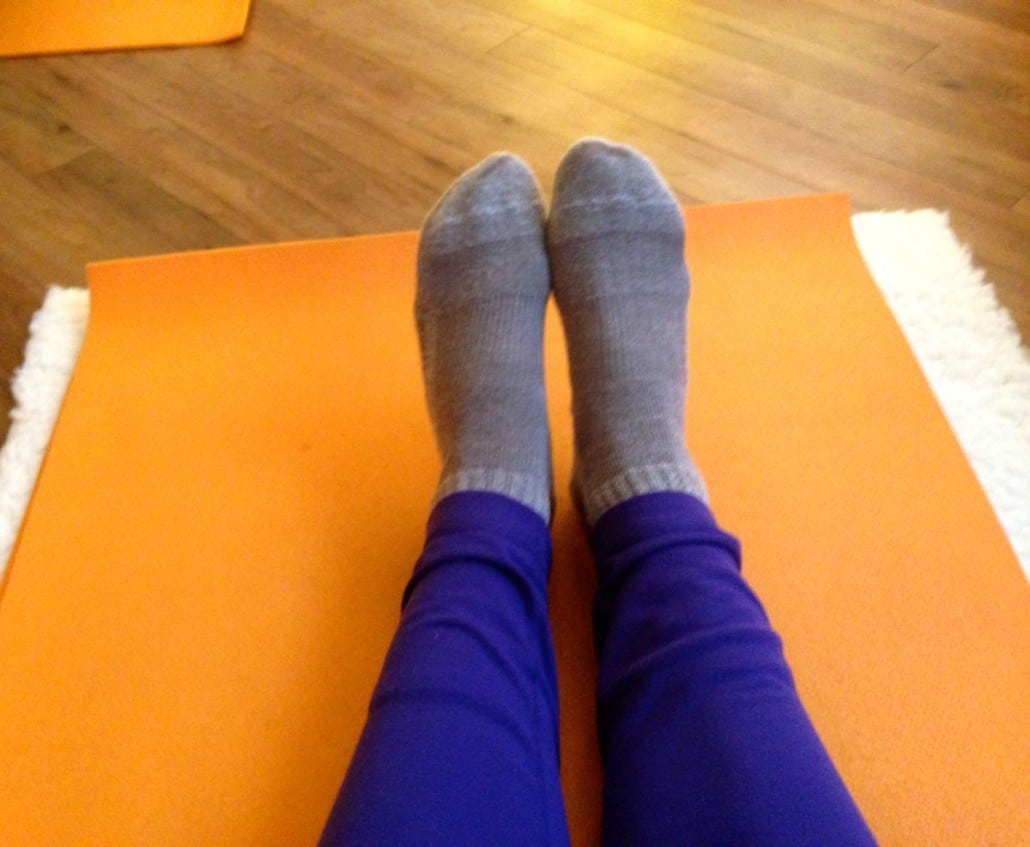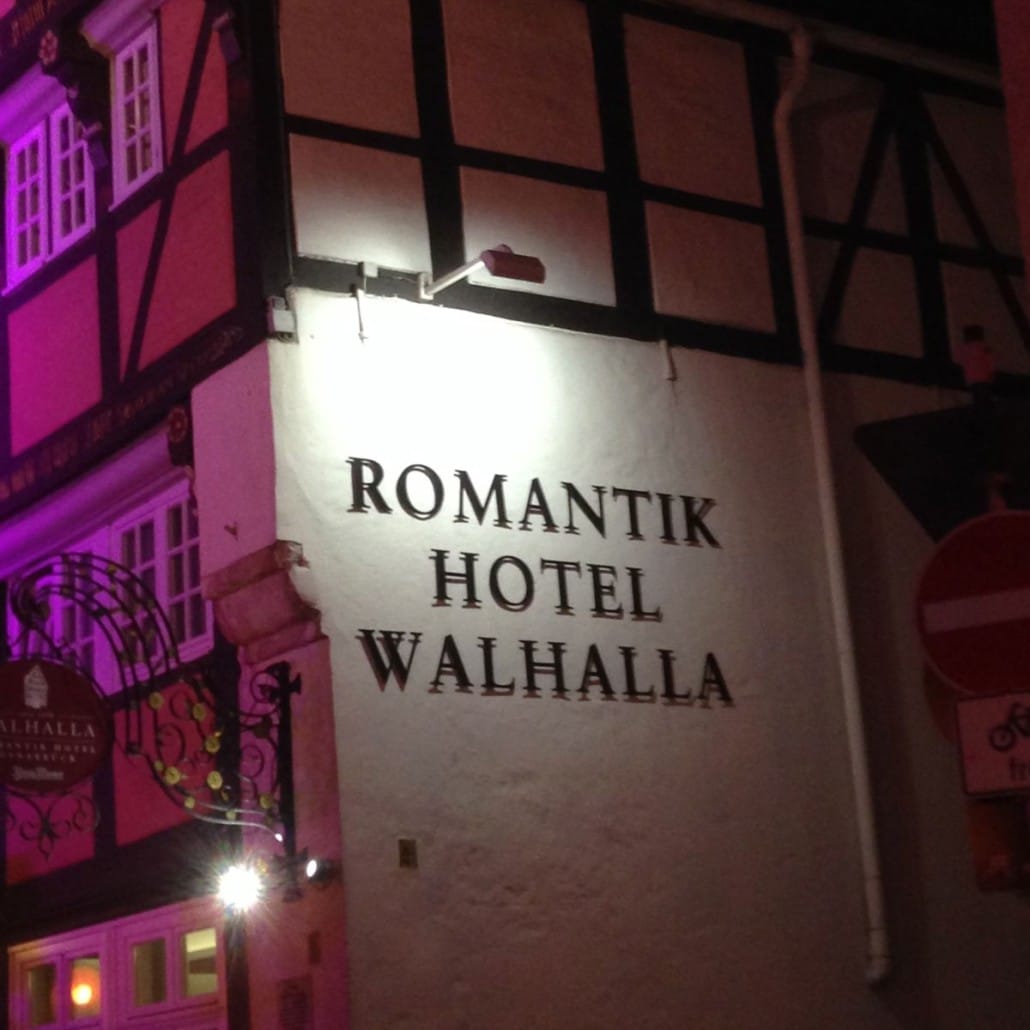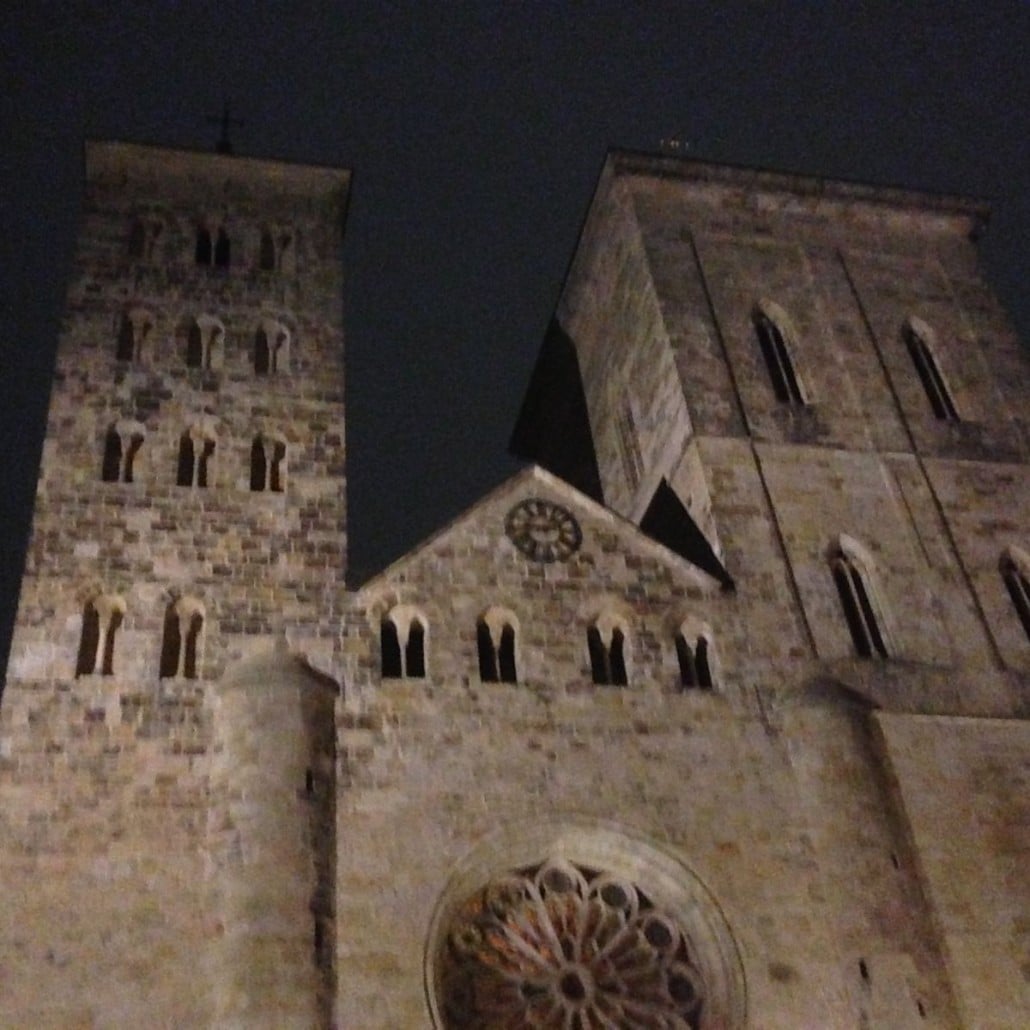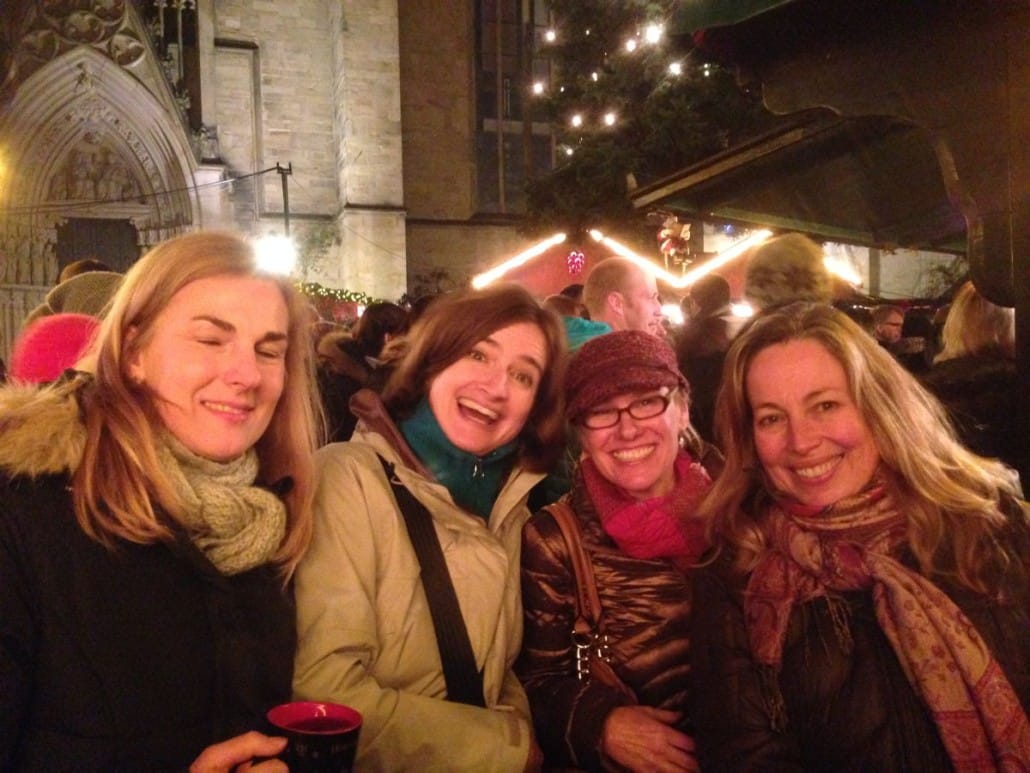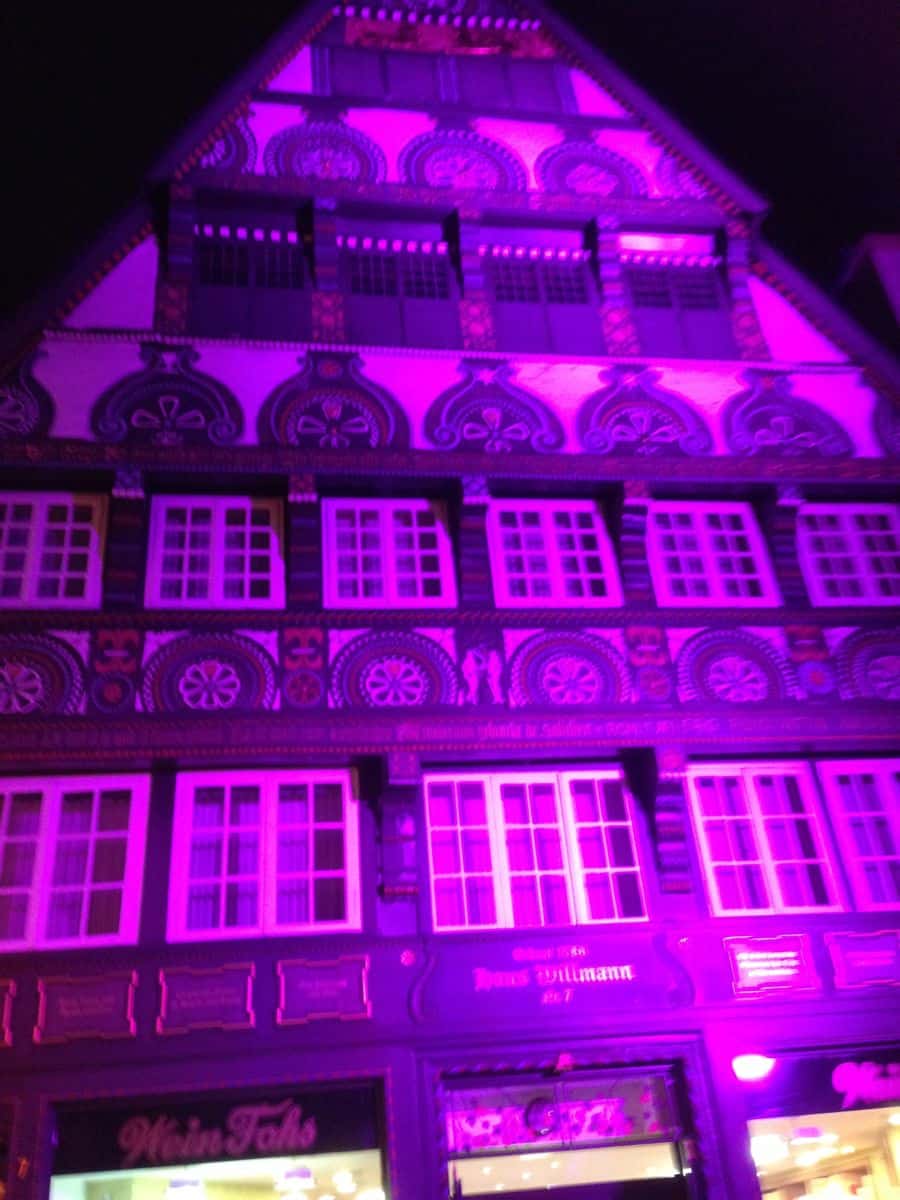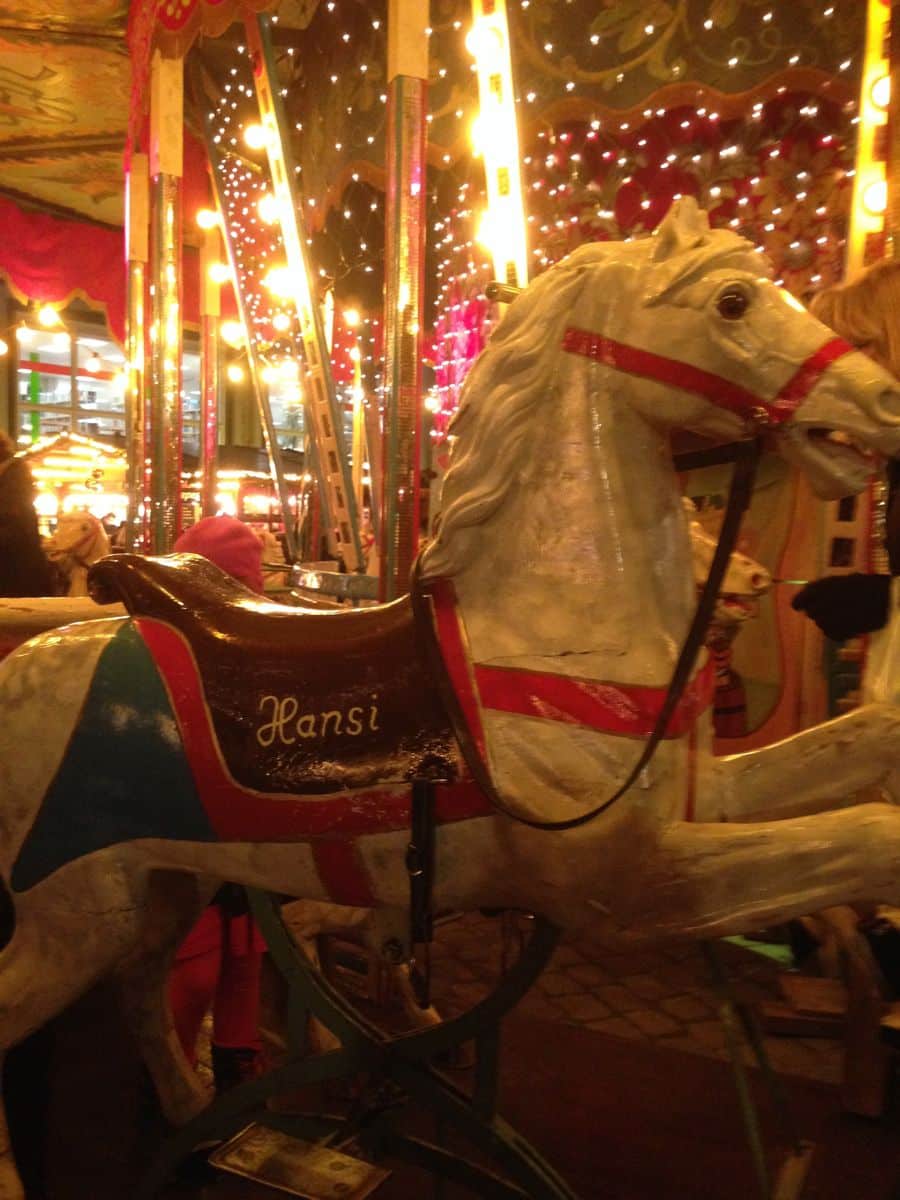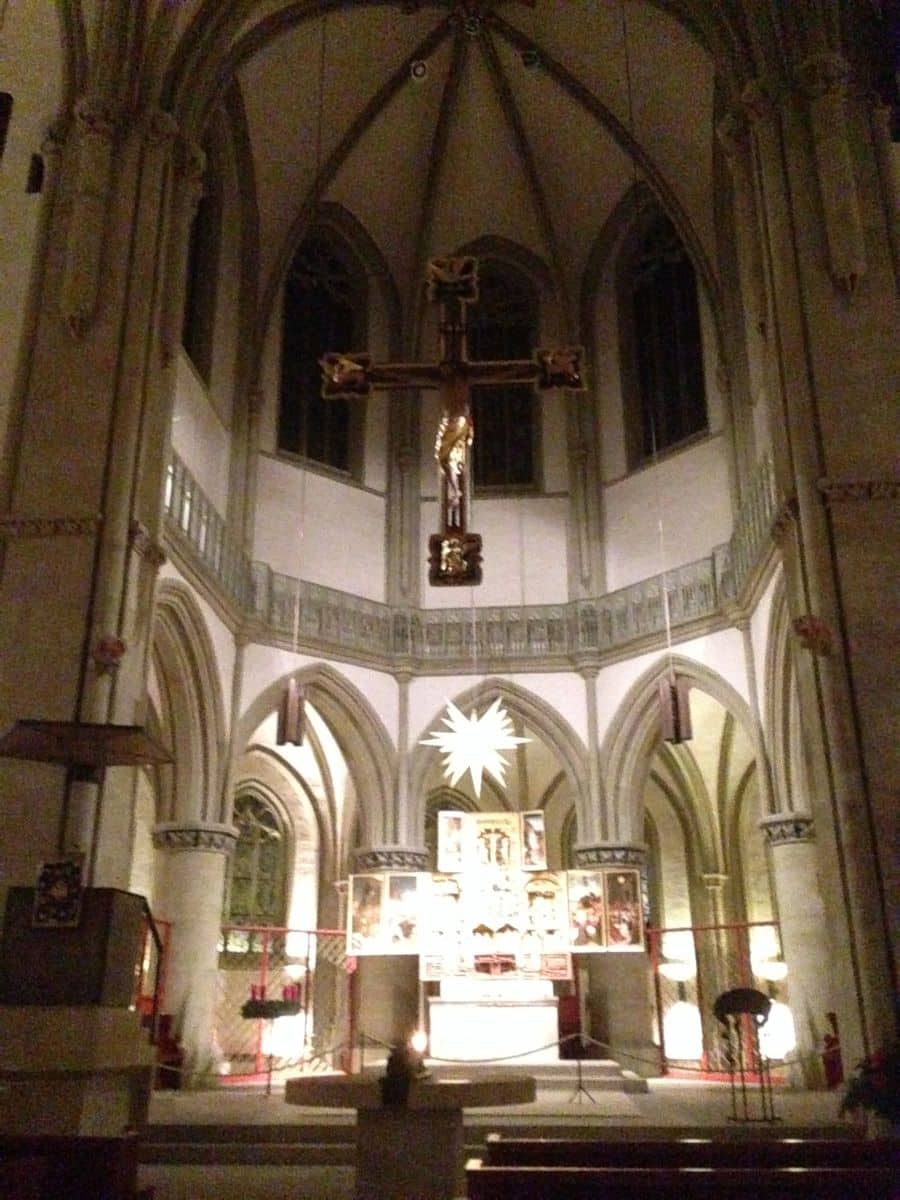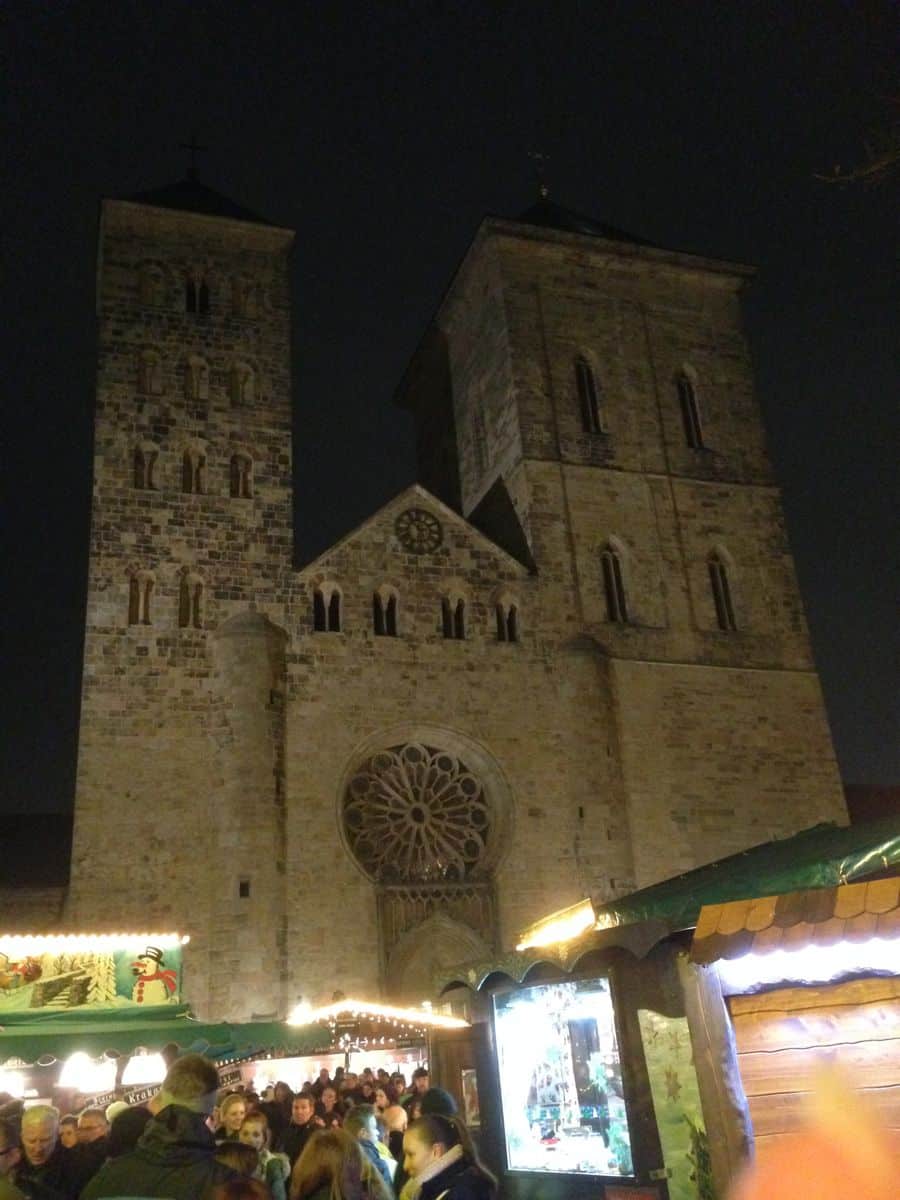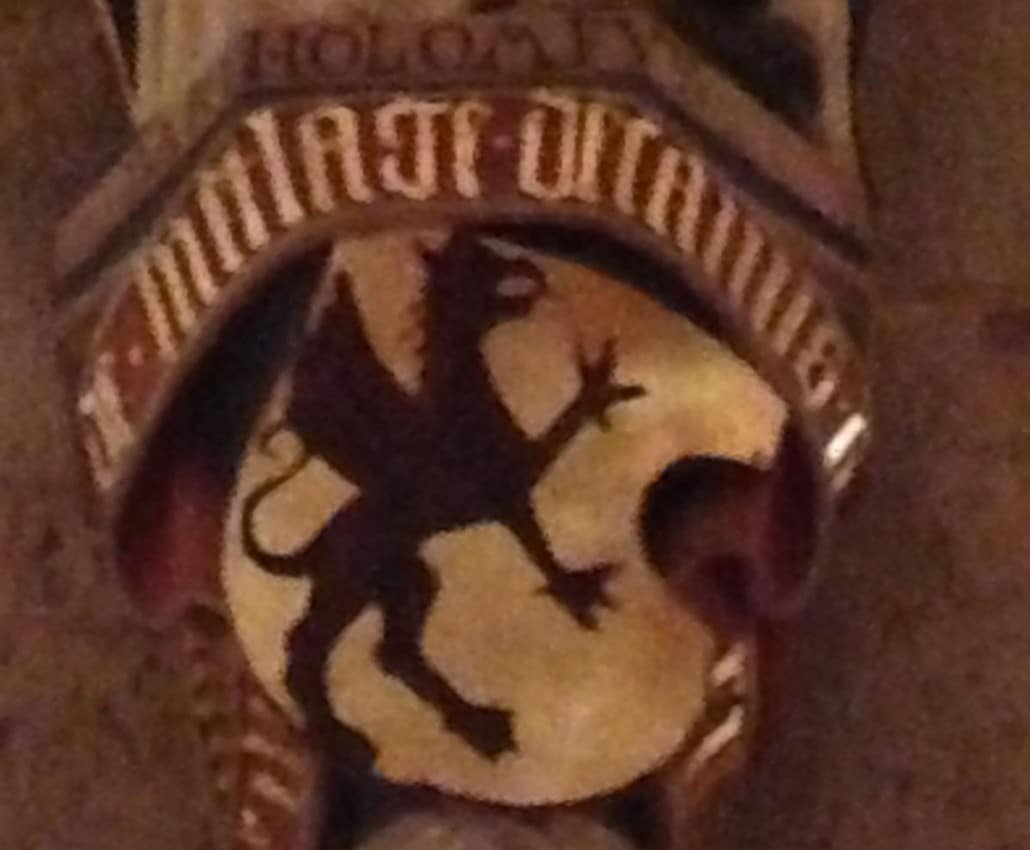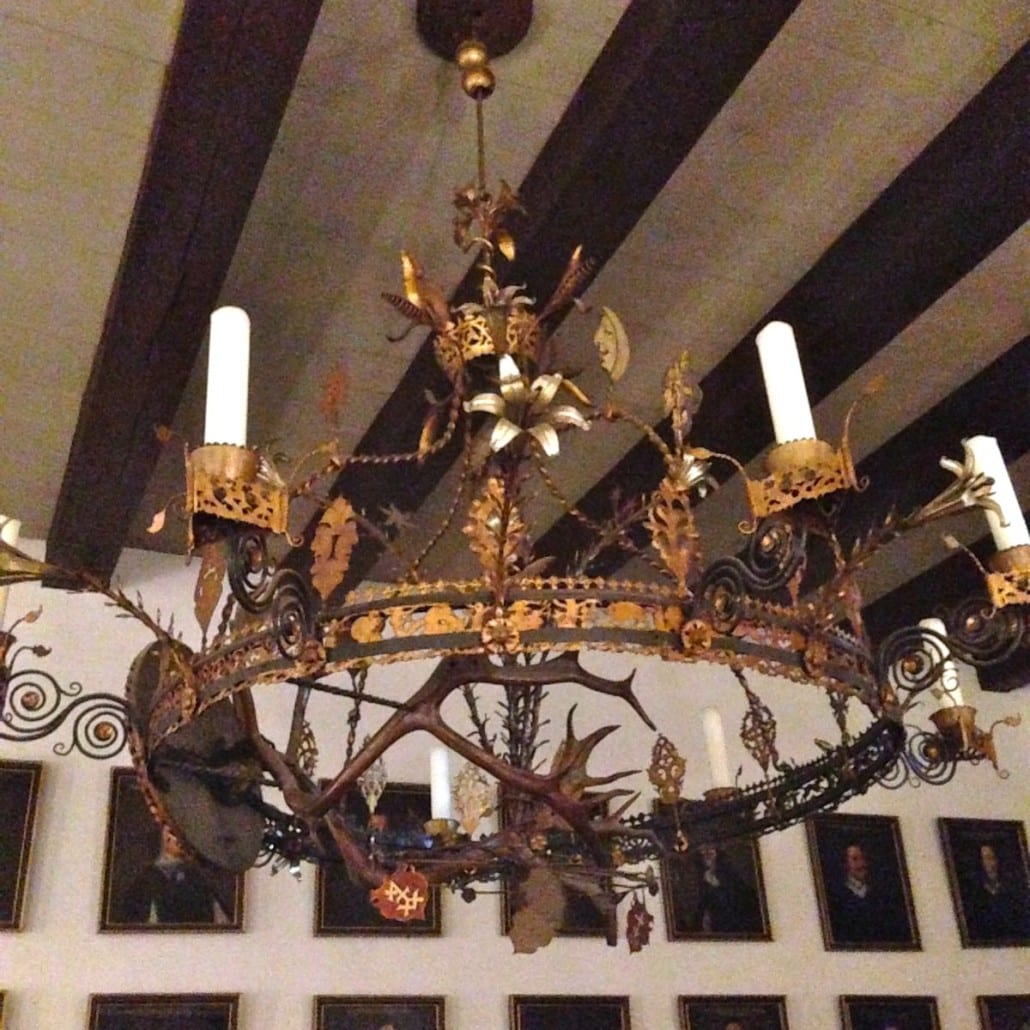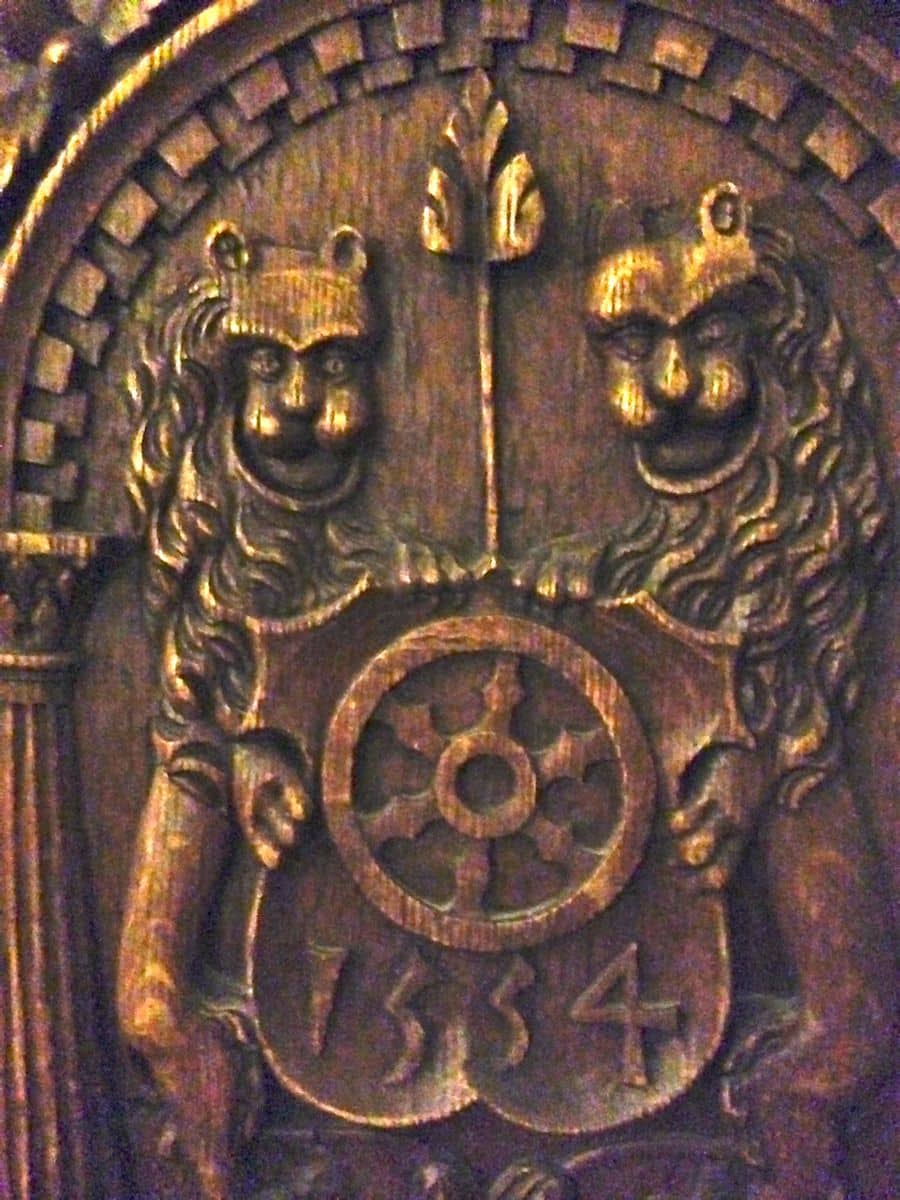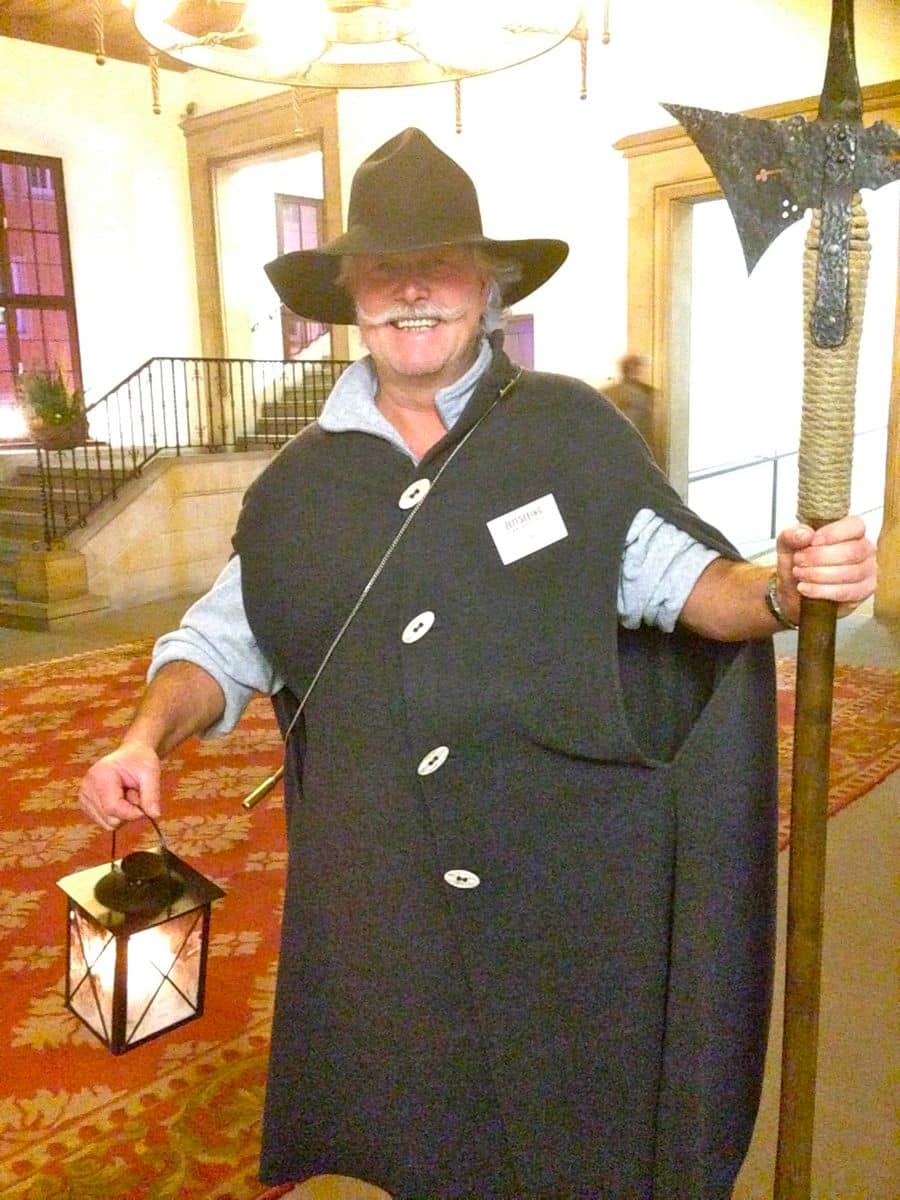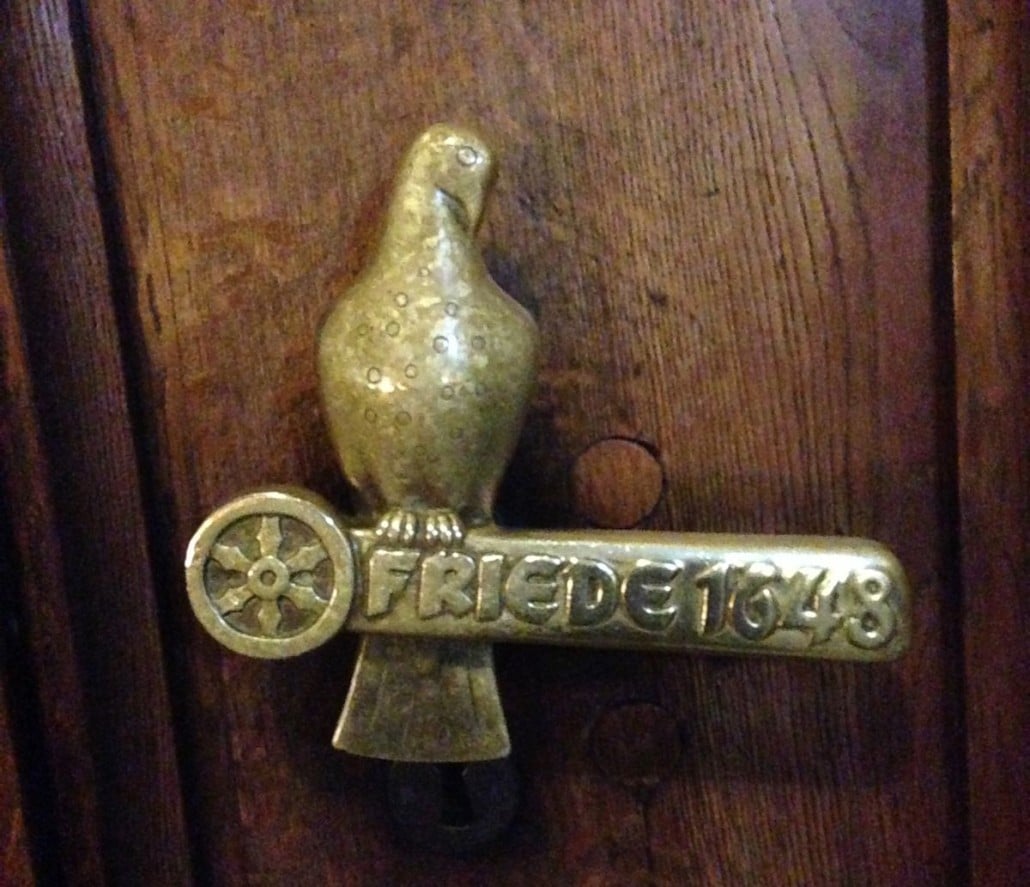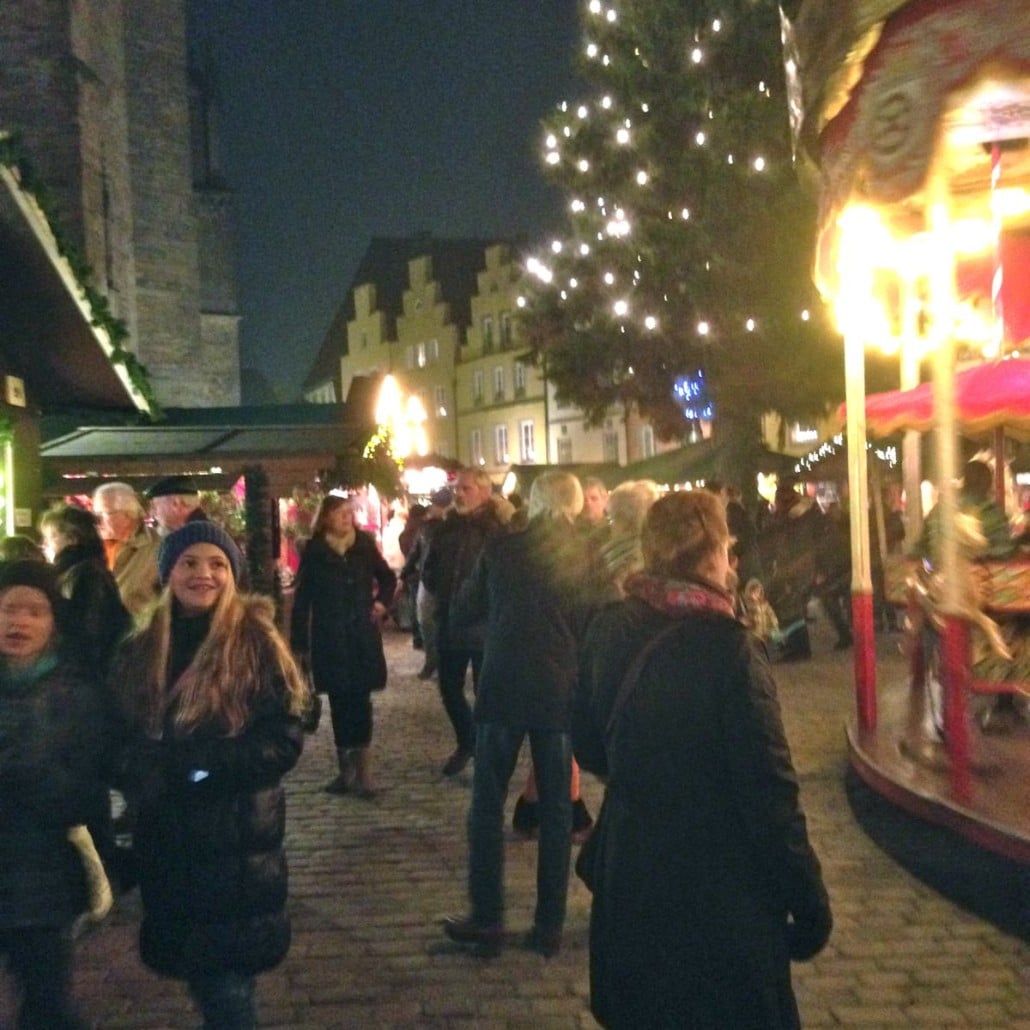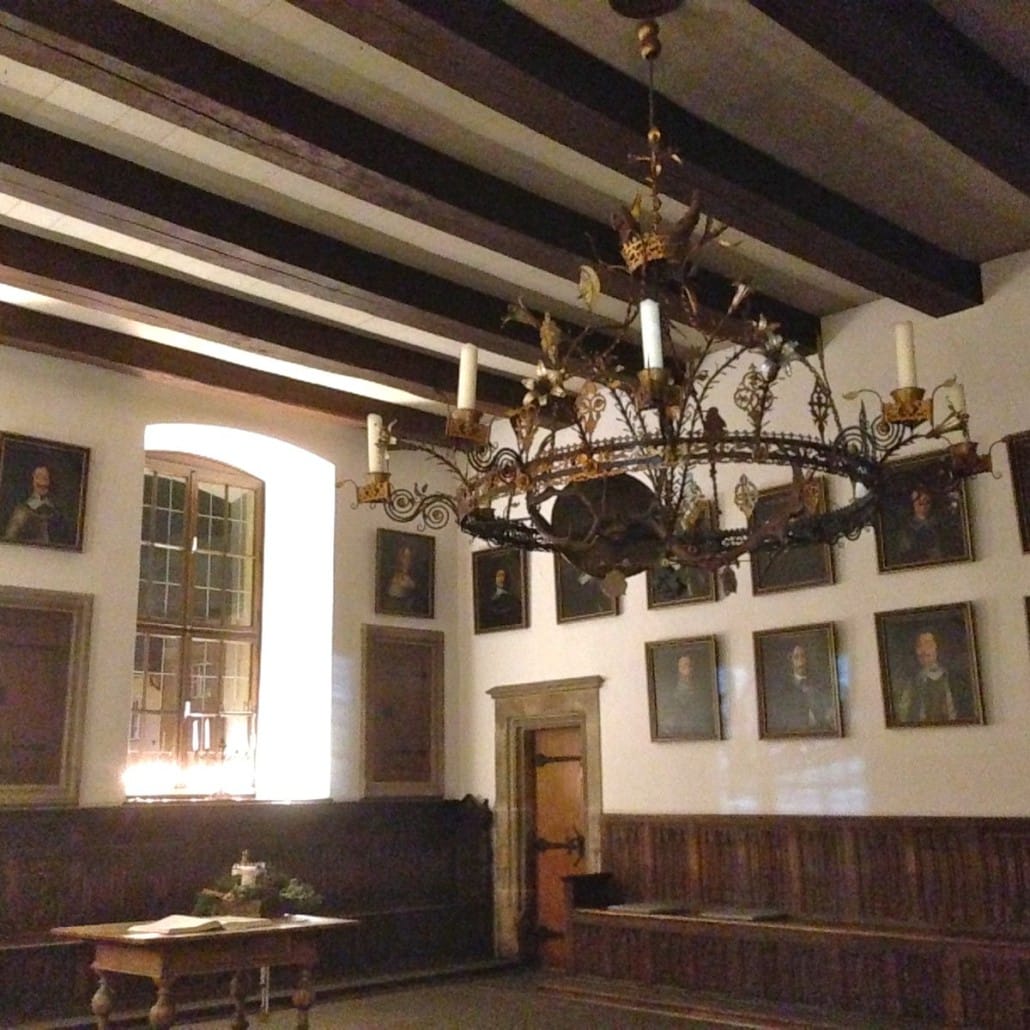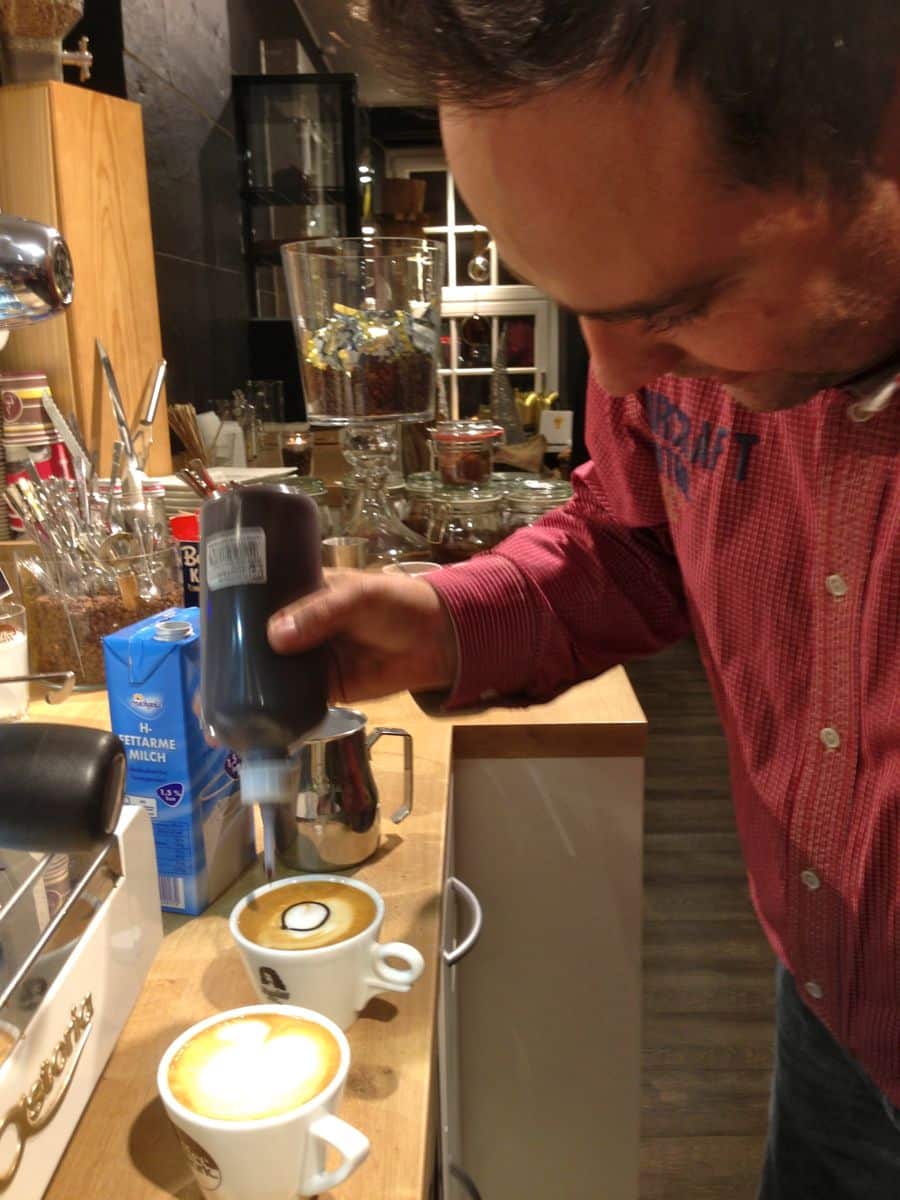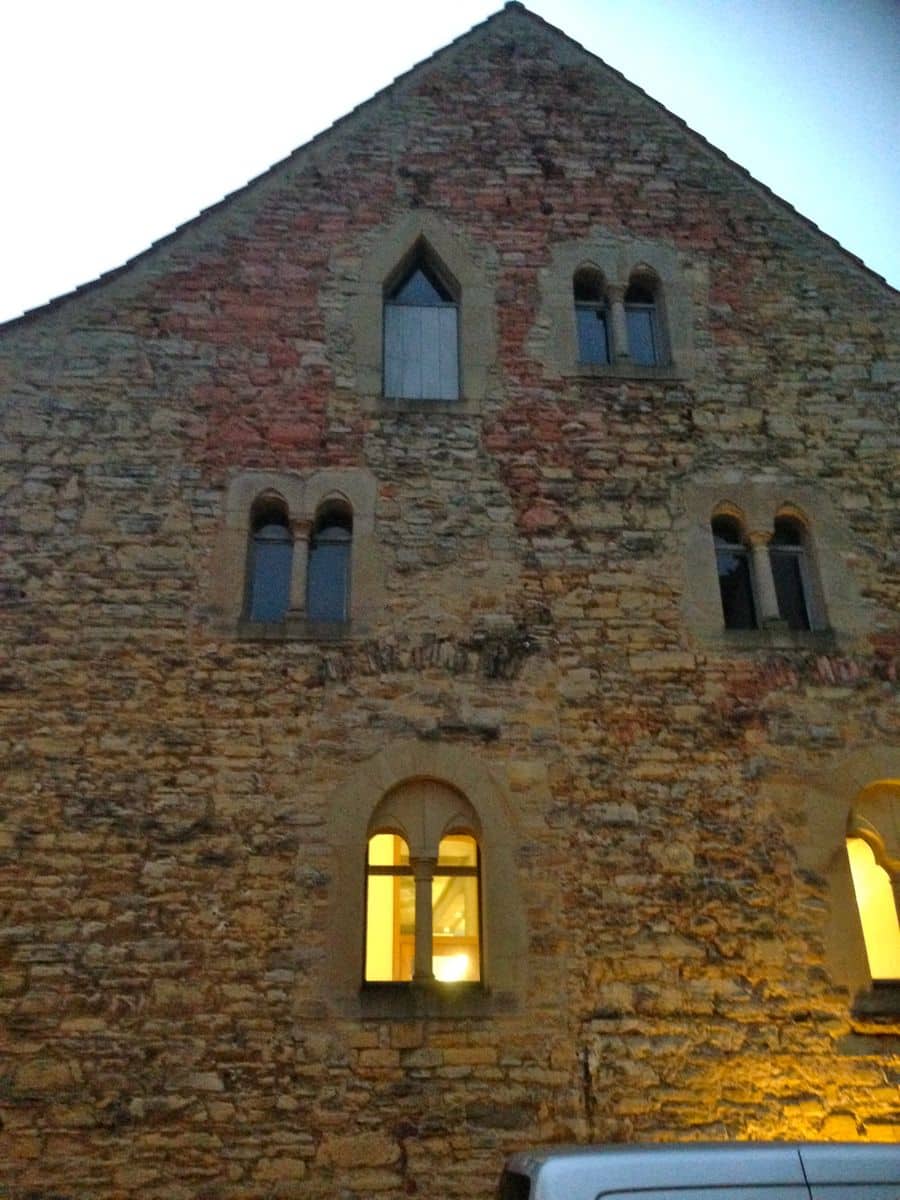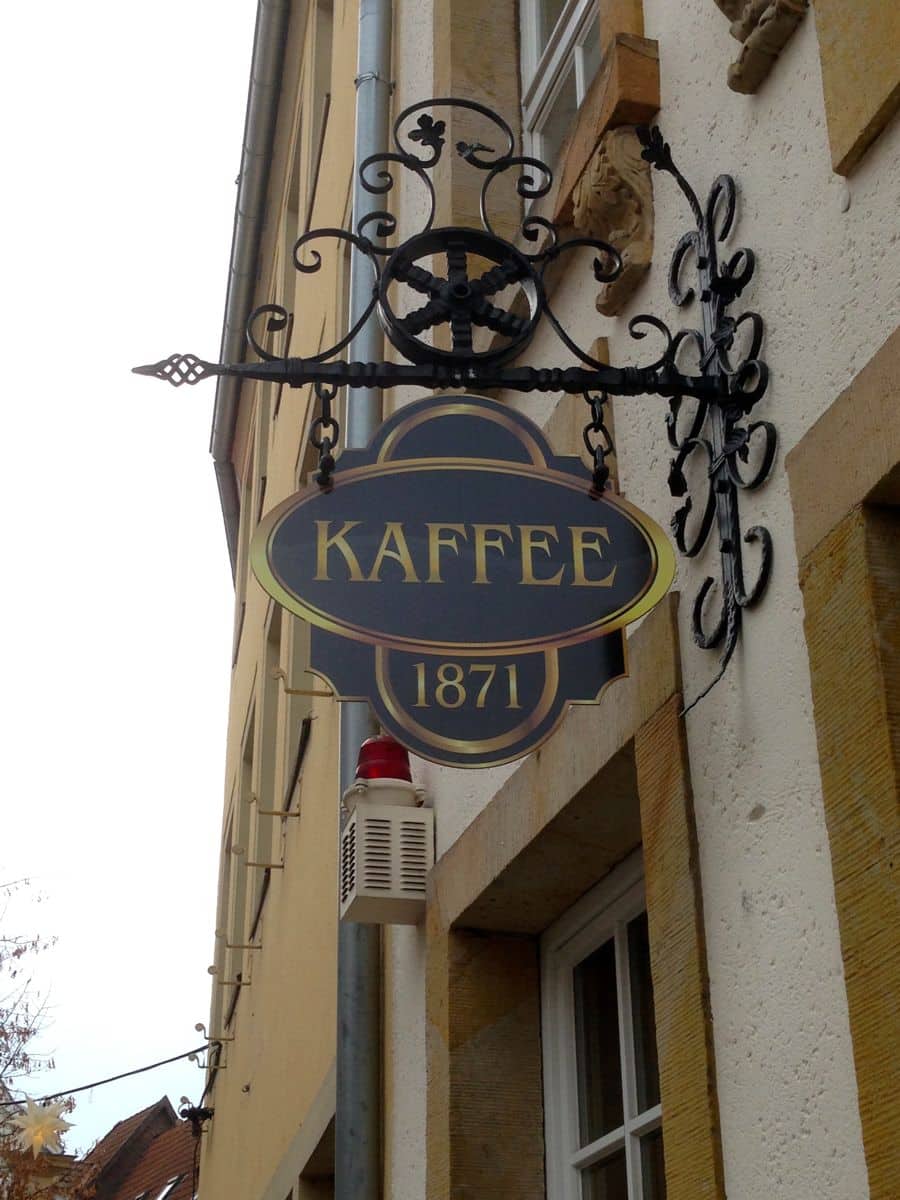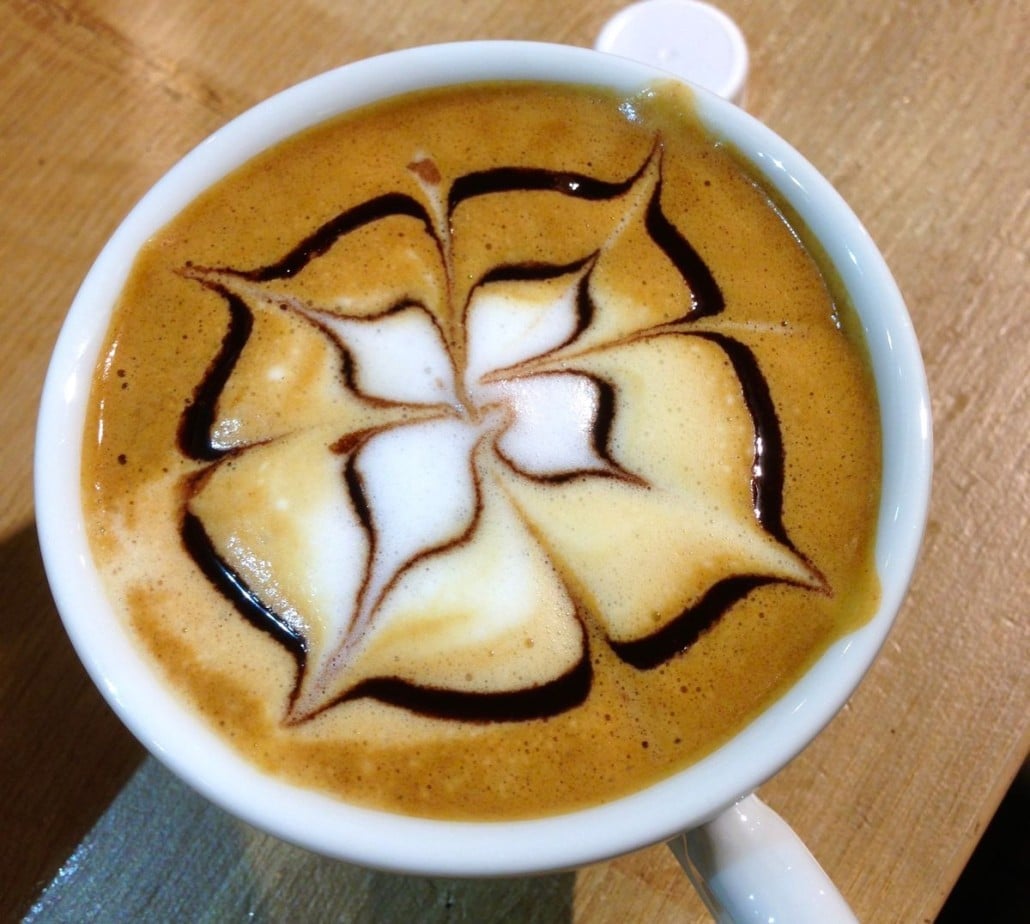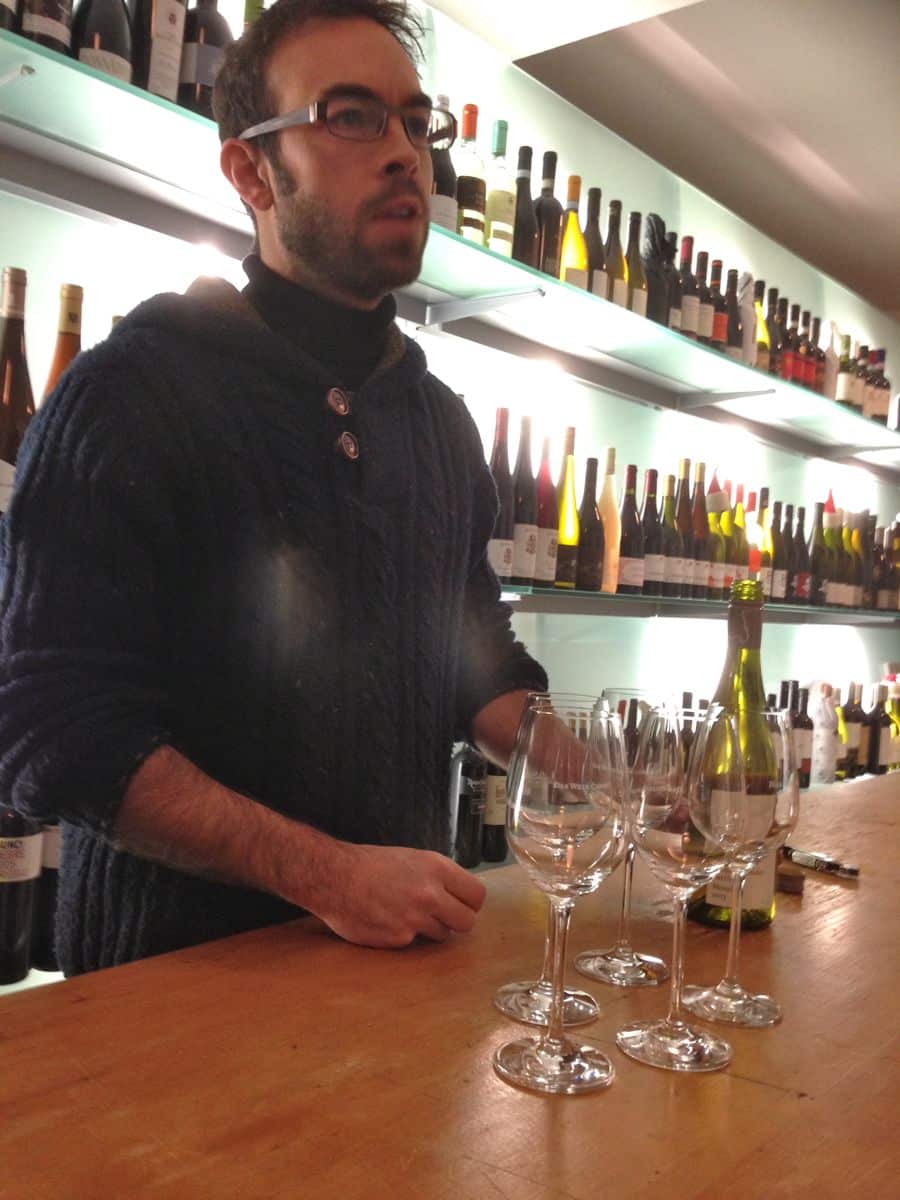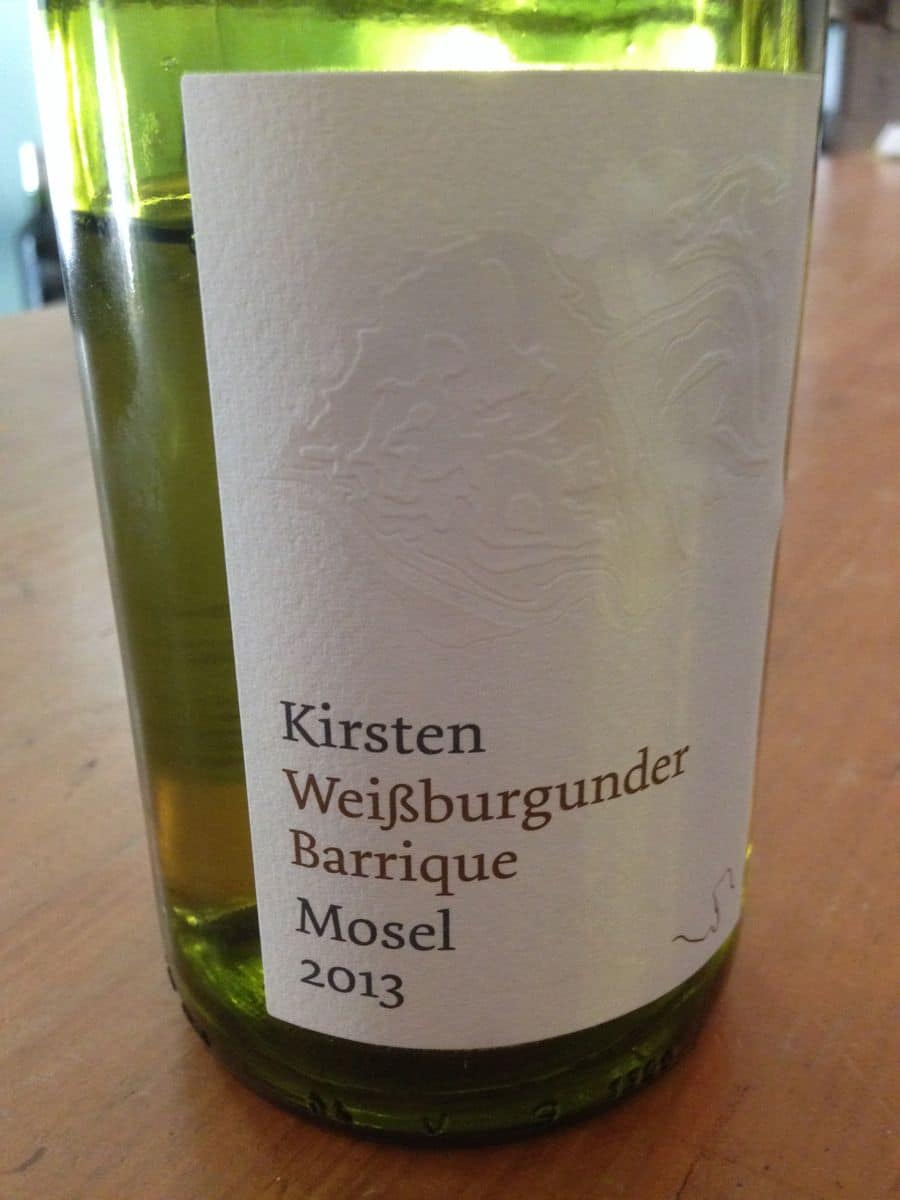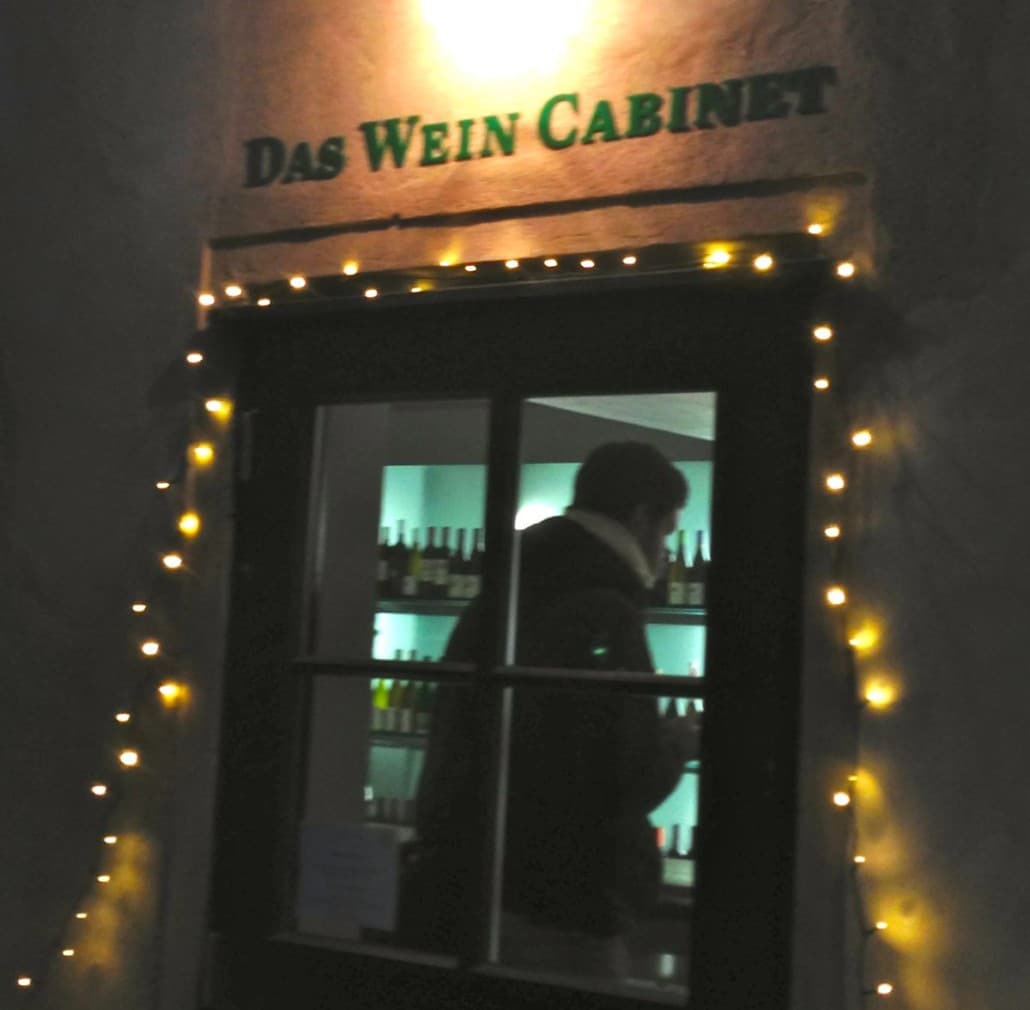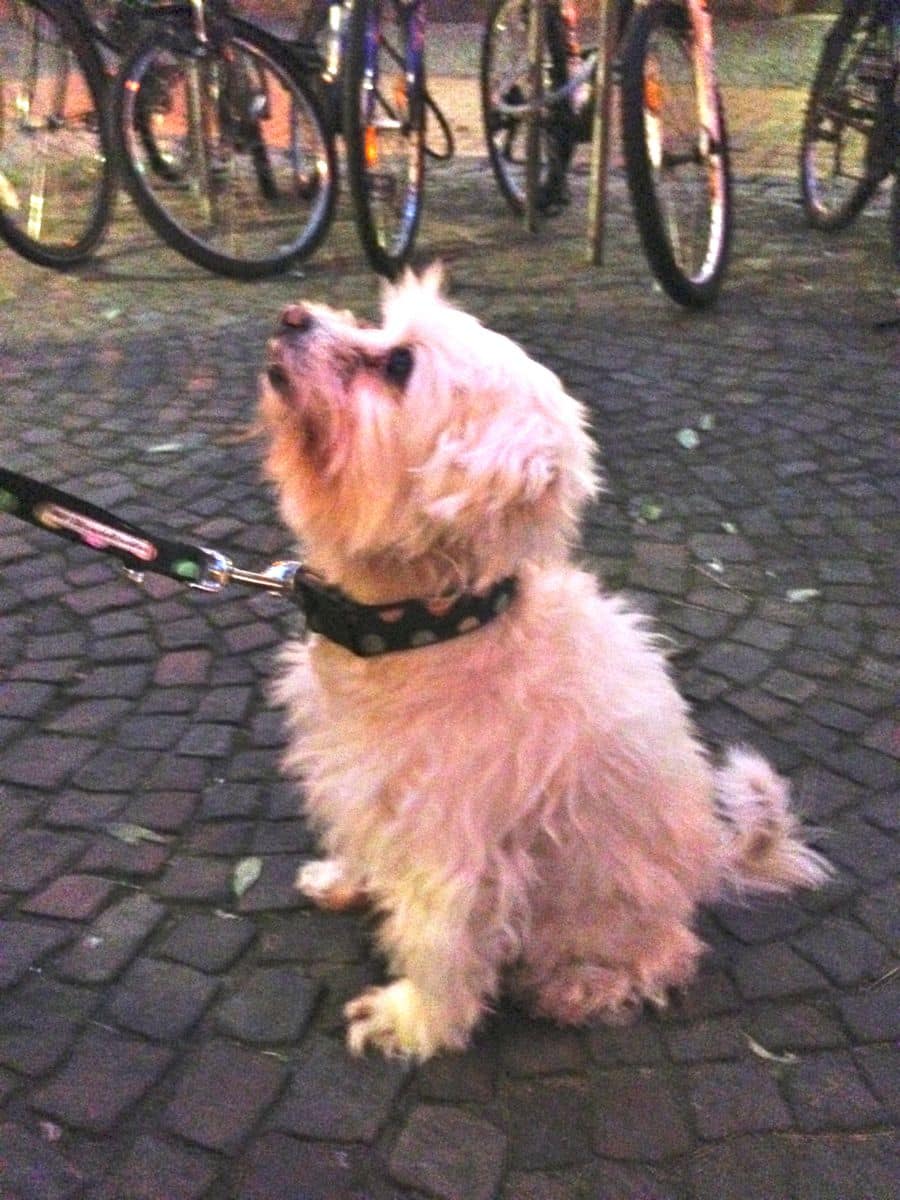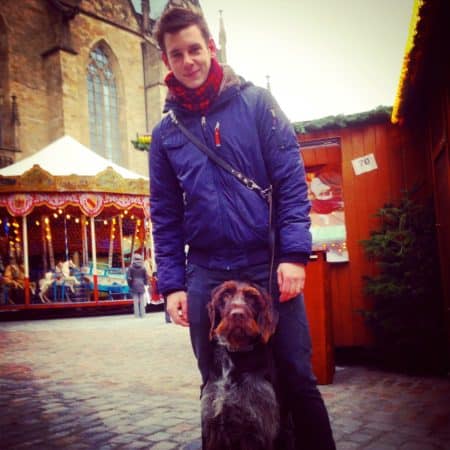
As part of a weeklong, five-city visit to western Germany, I visited Osnabrück with Historic Highlights of Germany. Osnabrück is a very old town with ancient walls, cozy cafes, great boutique shopping, and excellent wine bars! Below, I’ve compiled a list of my favorite things to do in Osnabrück. If you have some of your own, please feel free to add them in the comment section.
1. Enjoy a walk around the quaint Old Town interspersed with very old buildings with lots of charm. There are many fashionable and fun boutiques, coffee shops, and restaurants. Be sure to visit the old Steinwerk building built around 1220—one of the oldest building of its kind in Europe. The first floor is rented by the city of Osnabrück, and they welcome visitors.
2. Das Wein Cabinet, near the Old Town. Enjoy a tasting through one of their formal affairs (or just ask them). The Romans brought their wine culture two millennia ago and in the time since, the Germans have perfected the Riesling grape. The Mosel river area offers some of the best wines in the world thanks to its ideal growing conditions, steep slopes and earth rich in minerals. Don’t forget to buy a bottle of wine and tell them Georgie Jet sent you!
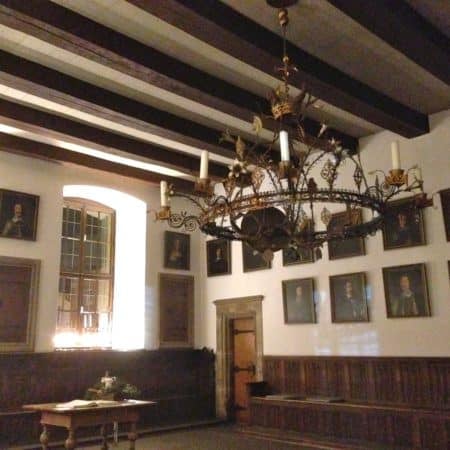
3. Visit the historic town hall (German: Rathaus) to see the Friedensaal (Hall of Peace) where Osnabrück’s Peace of Westphalia treaty was signed in 1648. Luckily, the artifacts were moved right before the allies bombed Osnabrück. I enjoyed looking at the ornate Bavarian chandelier and the portraits of former mayors while hearing the tales of the city’s past with our guide from Historic Germany.
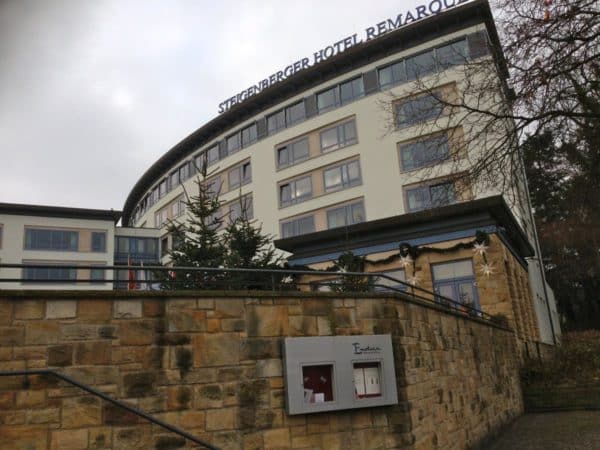
4. Stay at the nicely appointed Steigenberger Hotel, which is within walking distance of the Old Town. The hotel has a sumptuous lobby and my double room had an enormous bathroom and comfortable twin beds with down duvets and pillows. Their breakfast was one of the best I’ve ever experienced in Germany, with inspiration from talented cooks and many different courses. With its wellness room with large sauna and relaxation chaise lounges, this hotel is a top pick.
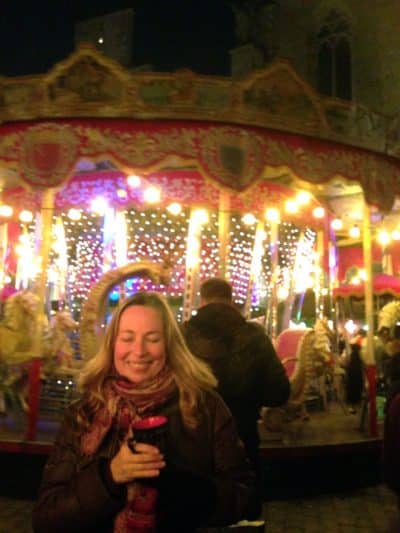
5. Visit the markets (and Christmas Markets if you’re there in December). There’s nothing quite like the setting of the Osnabrück Christmas Market with the old town hall and Dom St. Peter (St. Peter’s Cathedral) as a backdrop. You can ask for samples of the homemade cheeses and converse with the stall owners, many have either grown the produce or made the products.
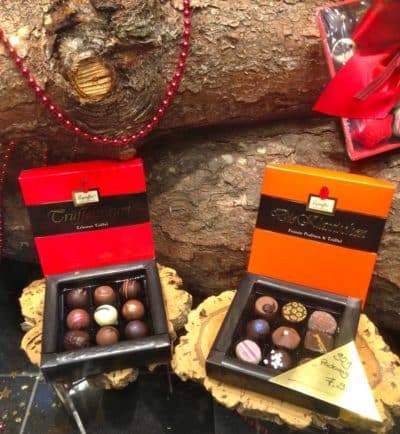
6. Visit the old world shops, especially the town’s favorite chocolate shop Leysieffer, which serves the most beautiful and delicious chocolates and confections. Opened in 1909, destroyed in WWII, and then reopened in 1960. Leysieffer uses only natural ingredients in all of its products, this place is eye candy as well as satisfying a craving for the best chocolate.
7. Explore why Osnabrück is known as the “City of Peace”—as the city where the Thirty Years’ War ended with the Peace of Westphalia. Historic Highlights of Germany guides can tell you about its dark medieval past where over 200 women and two men were burned as witches in the Middle Ages. On a lighter note, visit the medieval Dom St. Peter museum above the cloister with exhibits and artifacts dating back to the Roman times.

8. Stop at Kaffe 1871 for a cappuccino you’ll write home about. Coffee roaster Carlos Tomas shared his passion for coffee with us as he talked about where the organic coffee beans are grown and then made a delicious espresso with his own concoction of hand-ground vanilla sugar and cocoa beans! (I brought some home!).
9. Art lovers should see The Felix Nussbaum Museum. Nussbaum, a Jewish painter, was born in Osnabrück in 1904 and murdered by the Nazis. Felix’s art portrays his fear as the war closed in on him—as does the architecture of Daniel Libeskind. The museum honors Nussbaum’s legacy by exhibiting 170 of his works. Kunsthalle art gallery is located in the 14th-century Dom in the Old Town and hosts contemporary art from around the world.
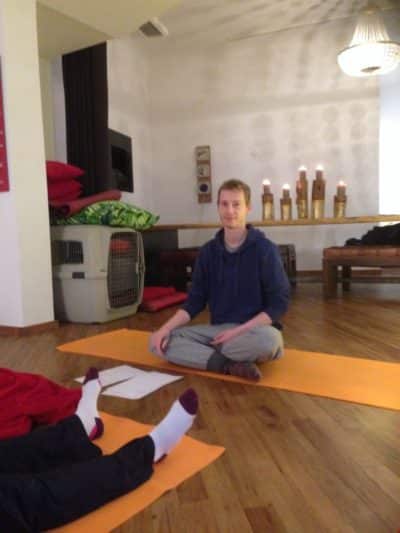
10. Continue with the theme of peace by taking a yoga class (in German) at the Yogaloft, walking distance from the Steigenberger Hotel. Caring instructor Jan Rautenberg added English words when necessary (when I looked totally confused!). I loved the plaque outside the studio and the poppy seed pastries and Italian coffee at the café next door.
I reluctantly left Osnabrück, via DB train, heading to my next destination (Muenster) and vowed to come back for a longer stay. City guides can be booked on the Historic Highlights of Germany homepage, or through the town’s tourist offices. The guides are extraordinary and only cost 6 Euros. Booking in advance is recommended as is traveling in the off season. You can also check out Historic Highlight’s of Germany’s Facebook page.
For even more on Historic Highlights of Germany, visit their site here or ToEurope.com.

